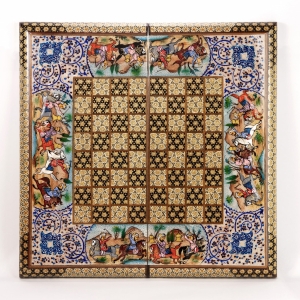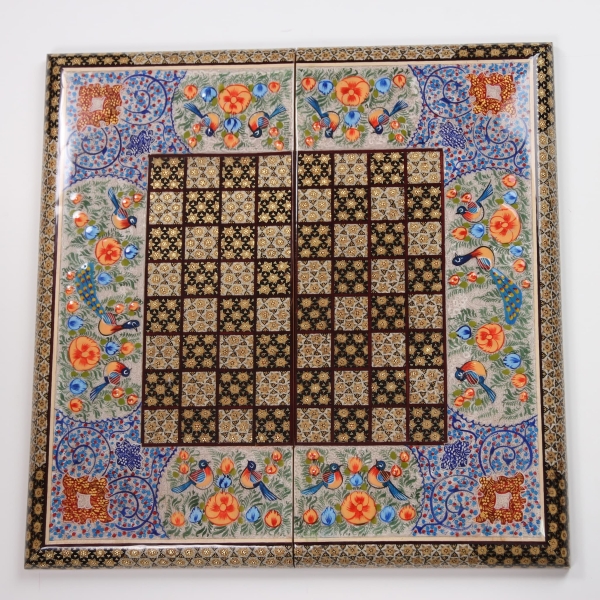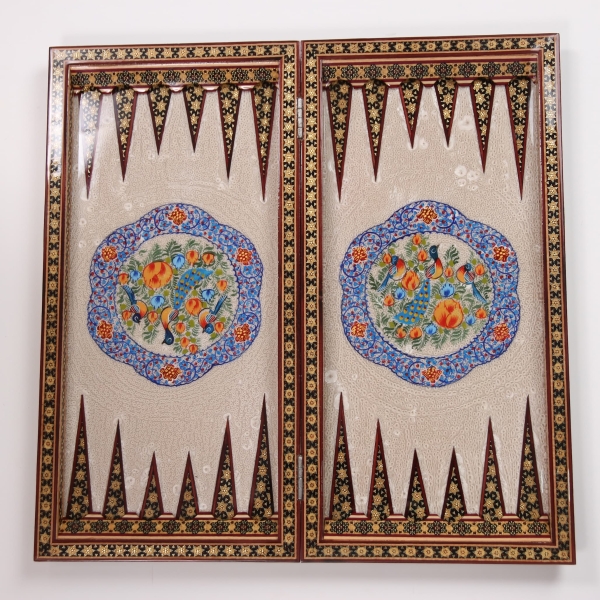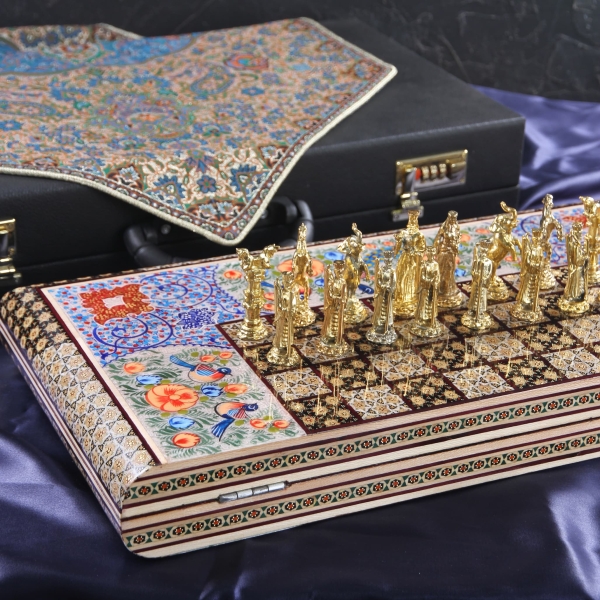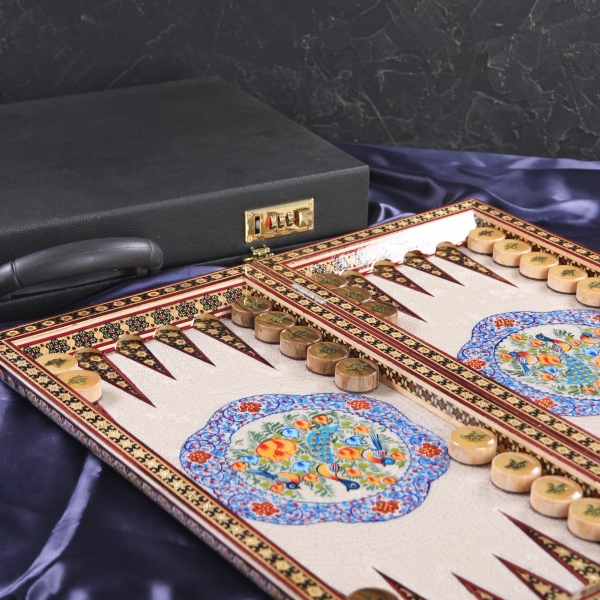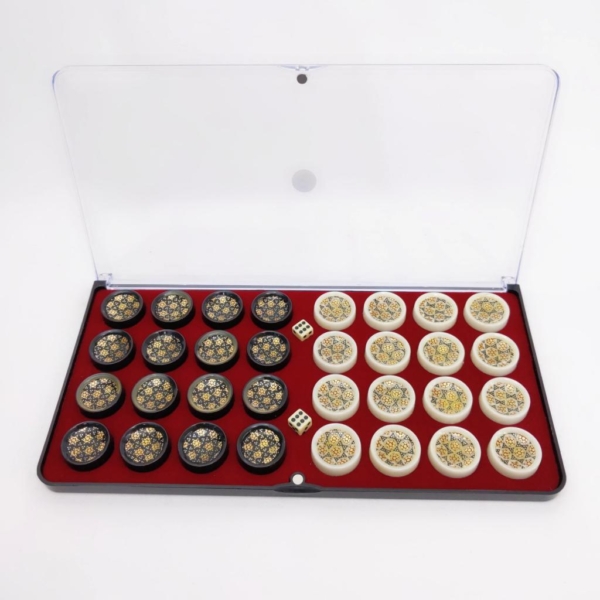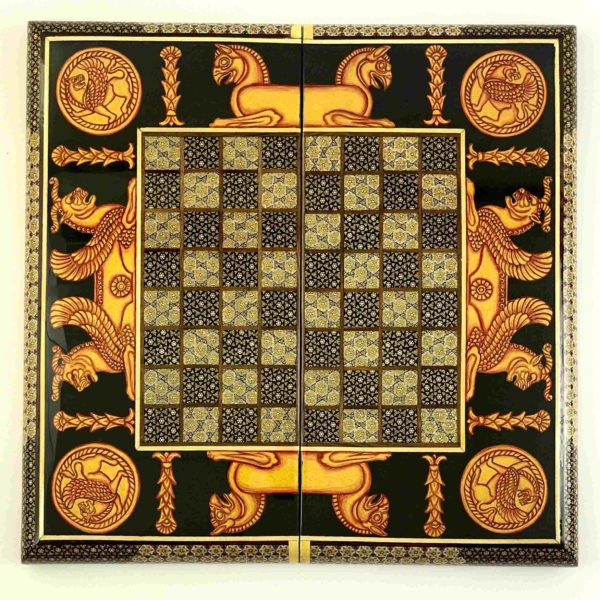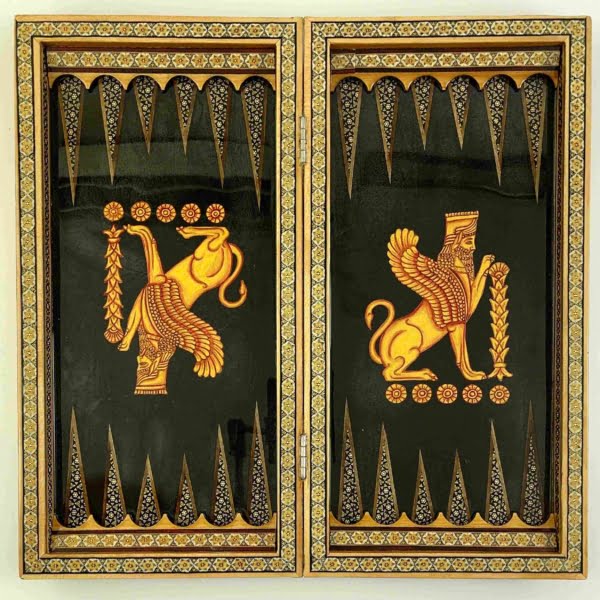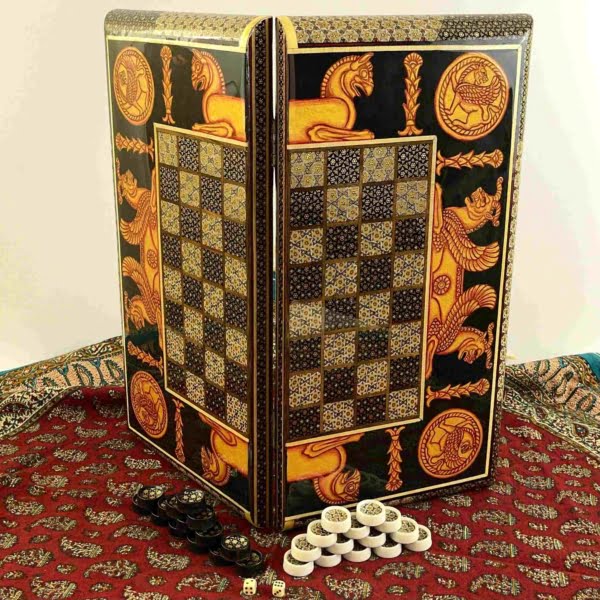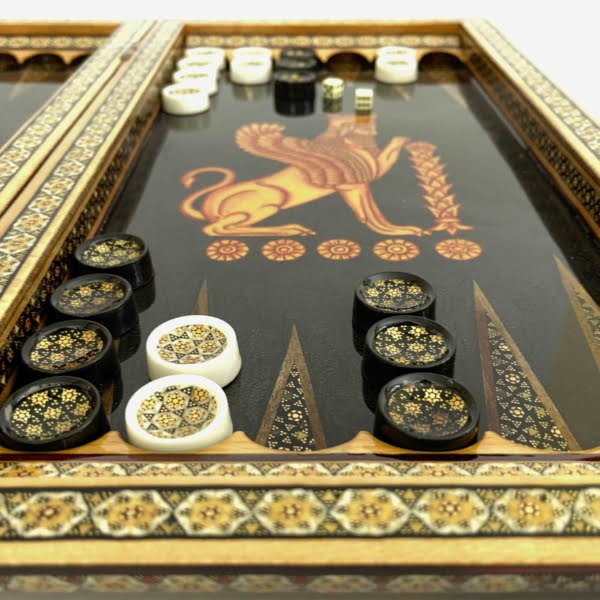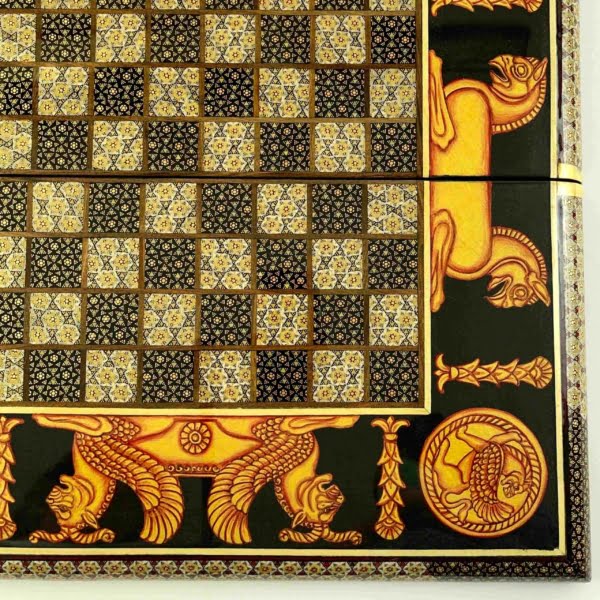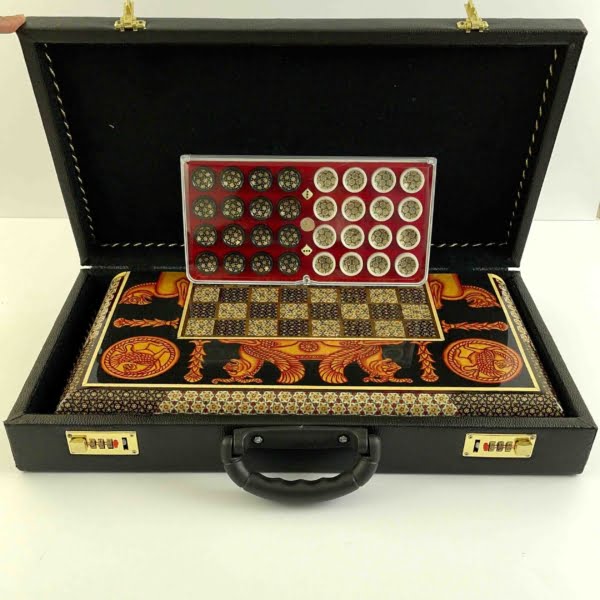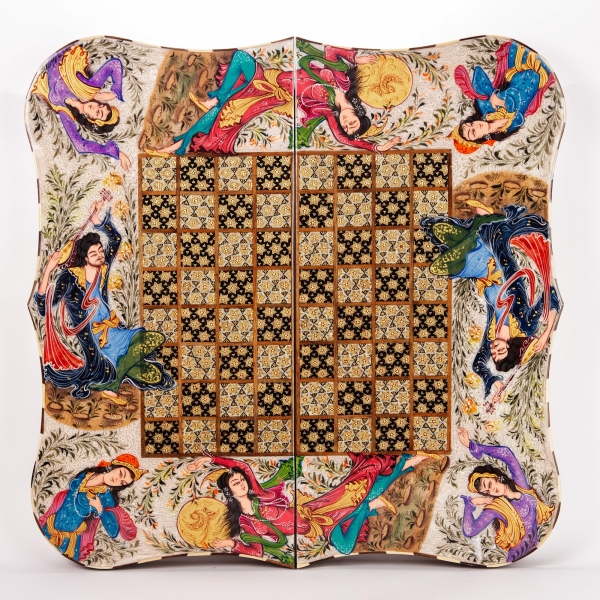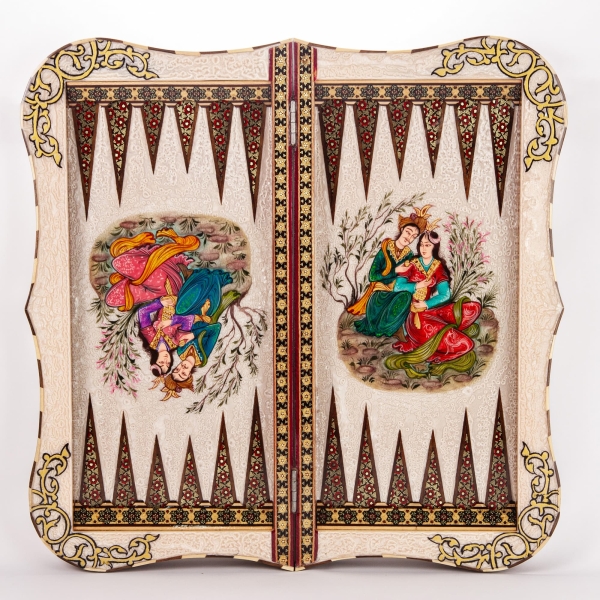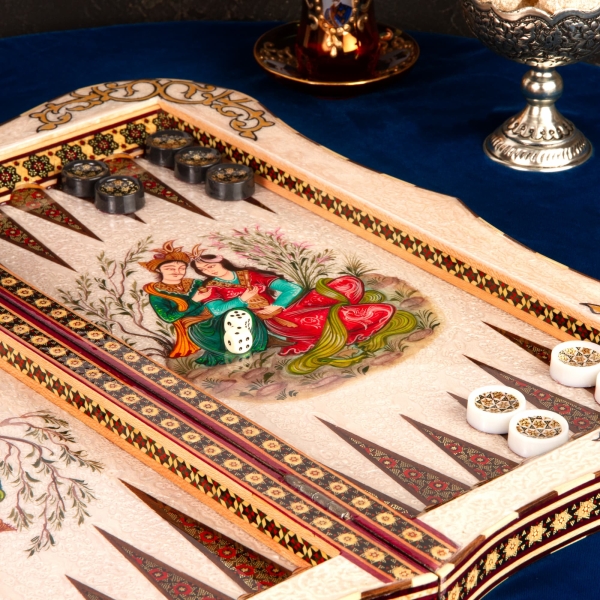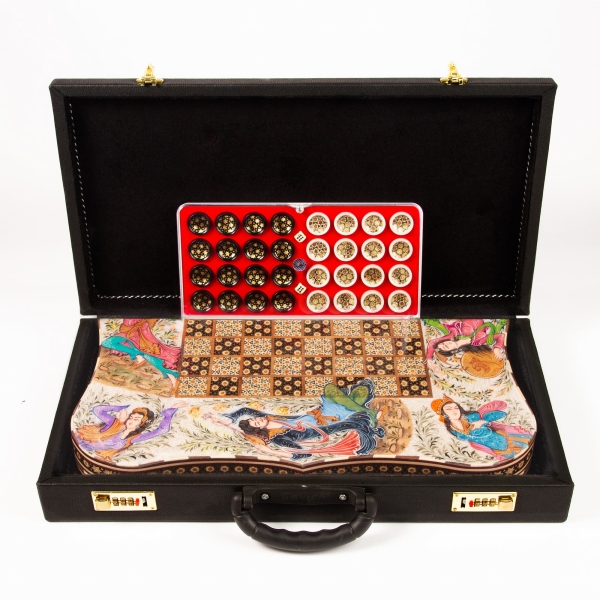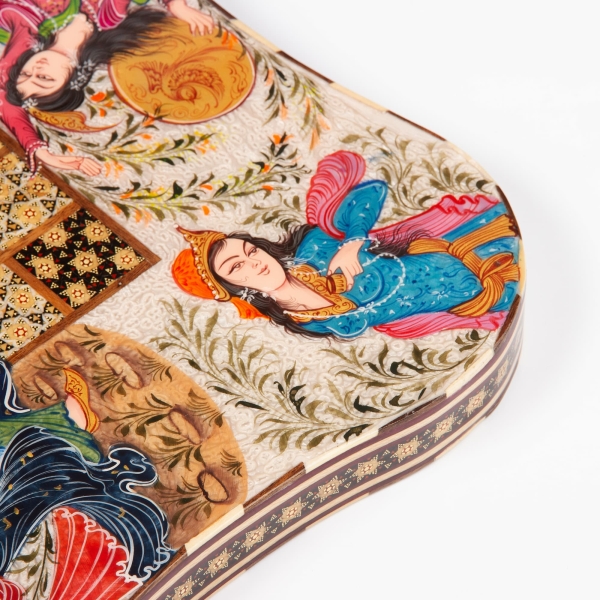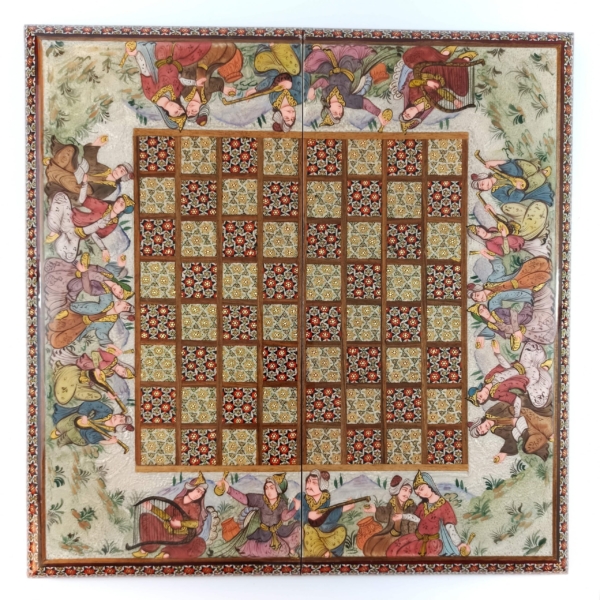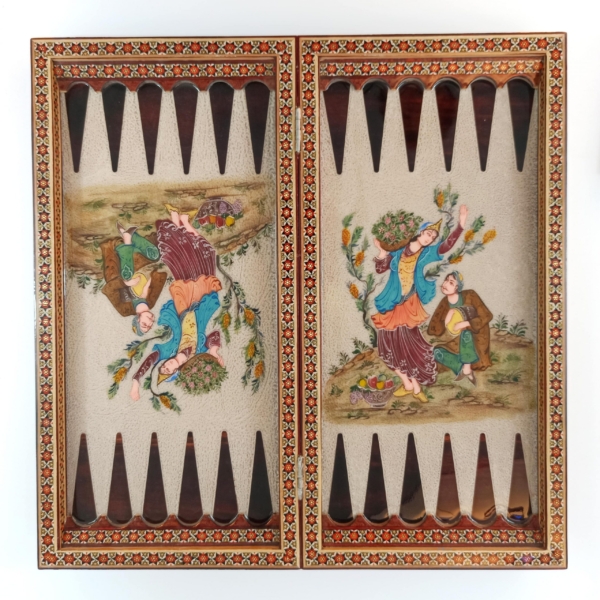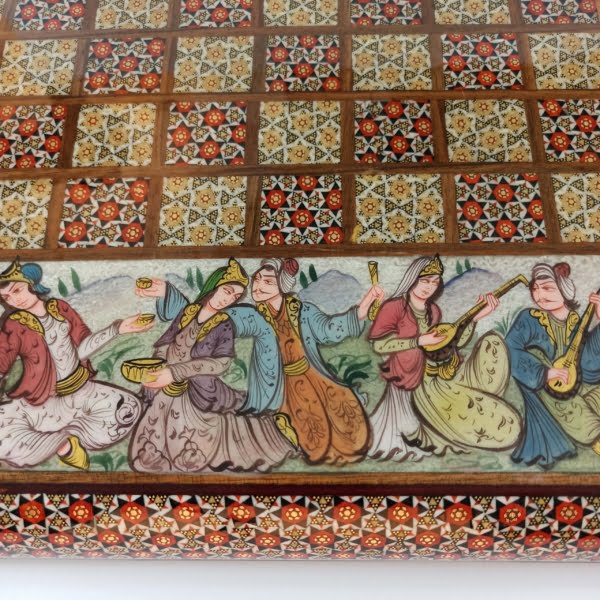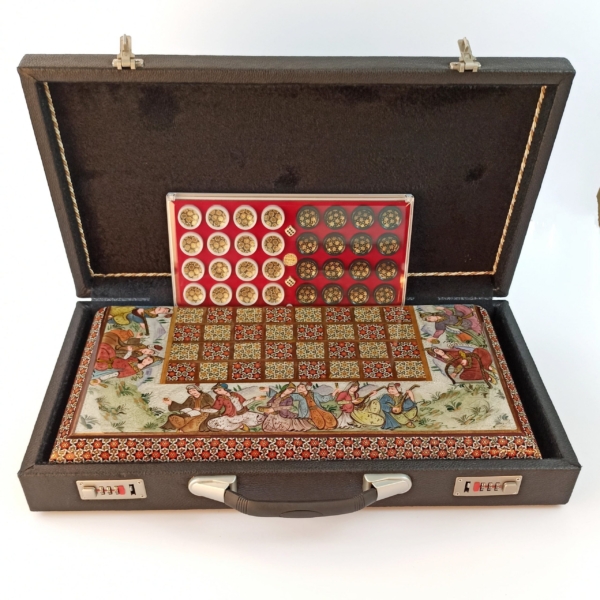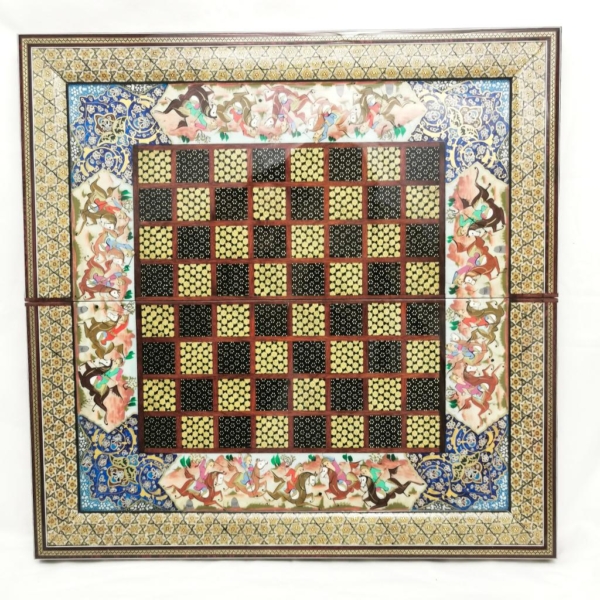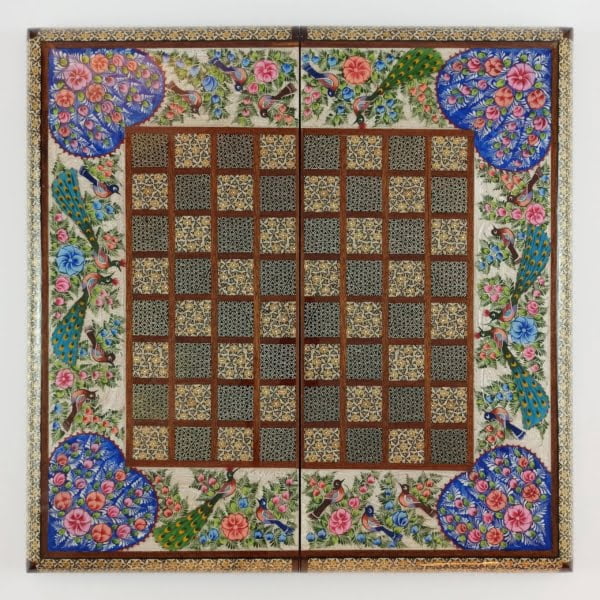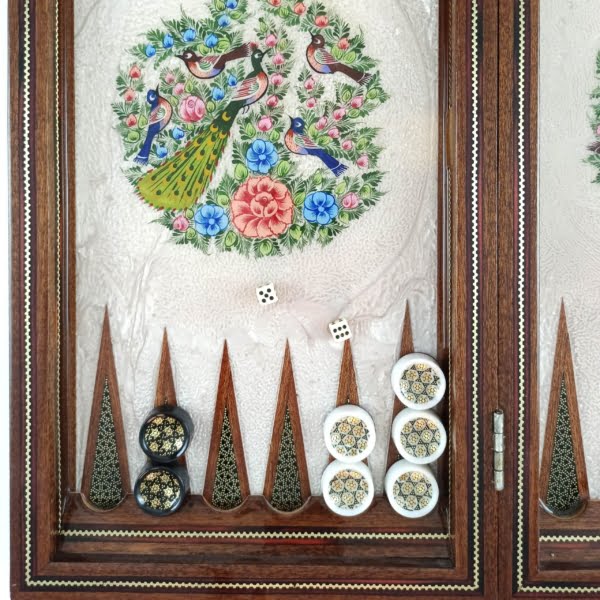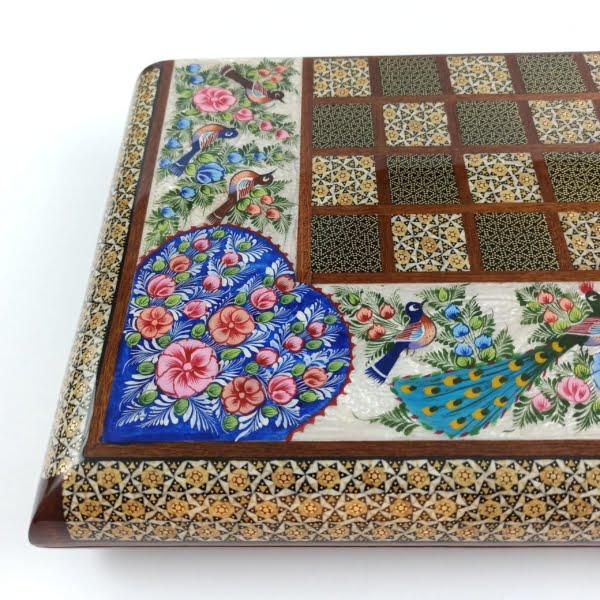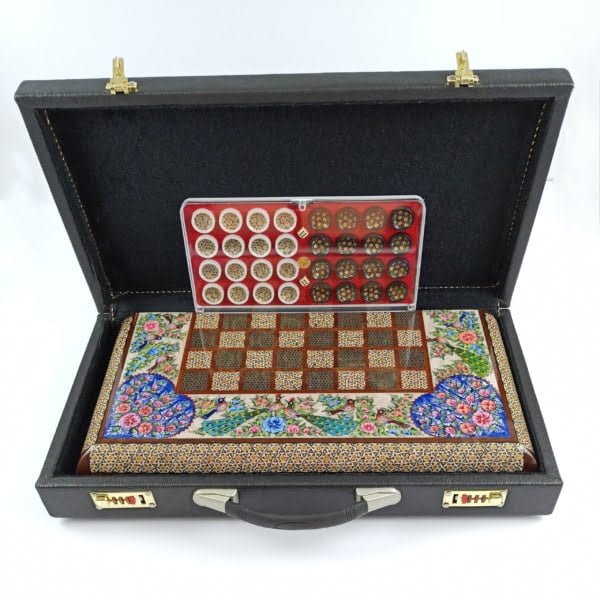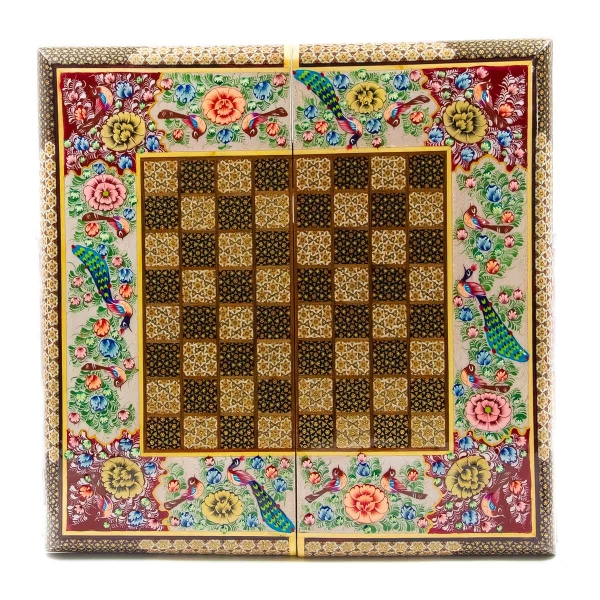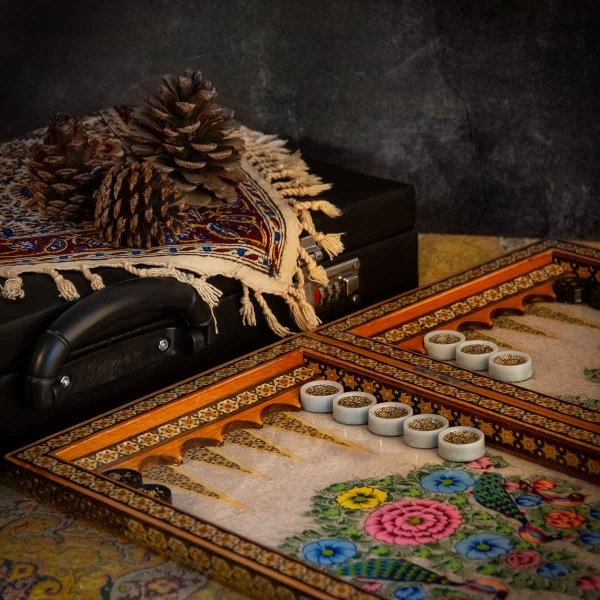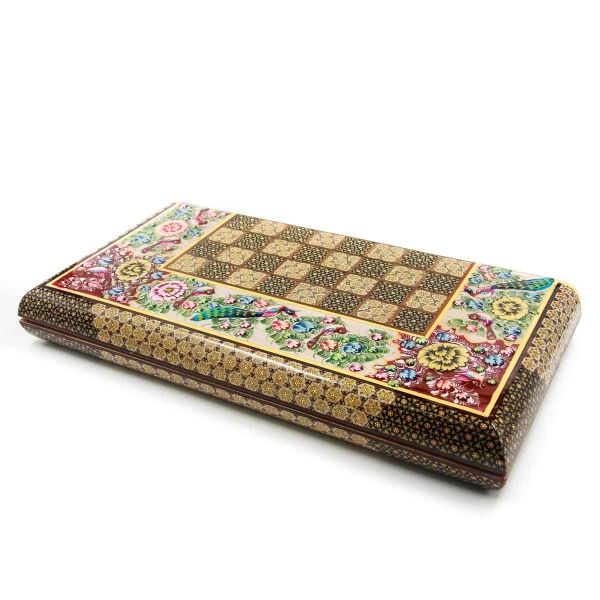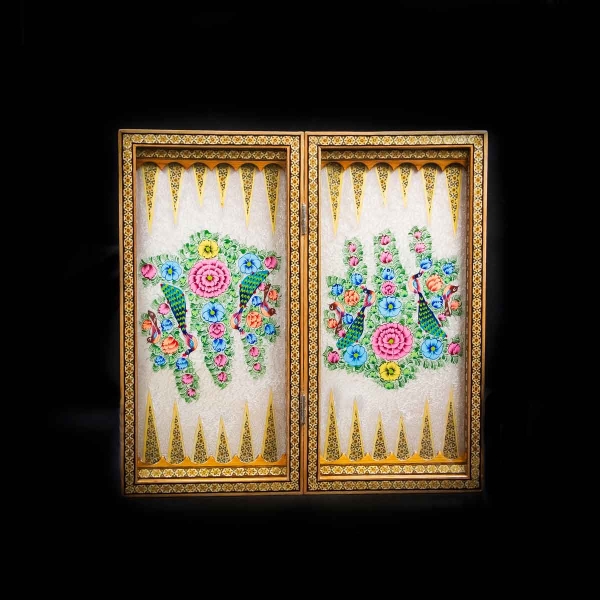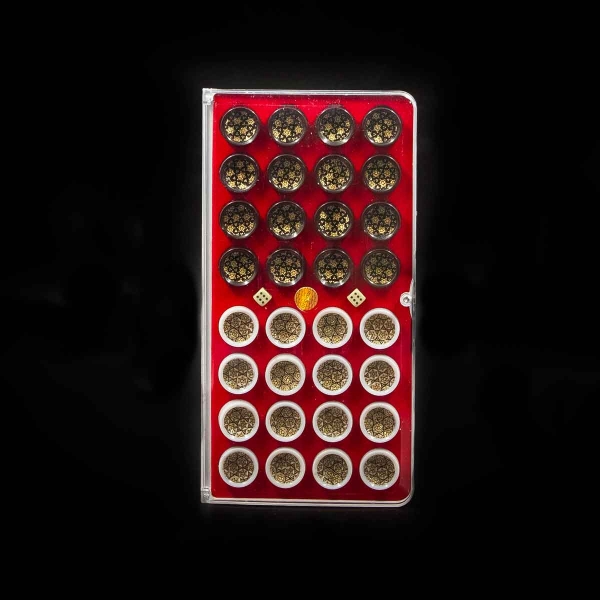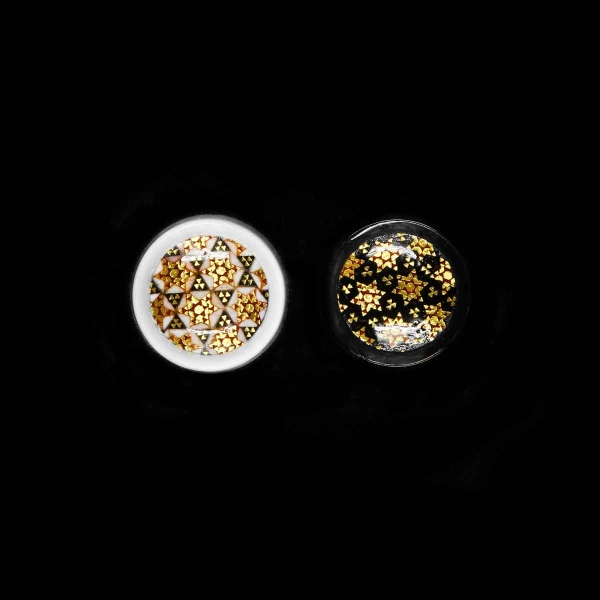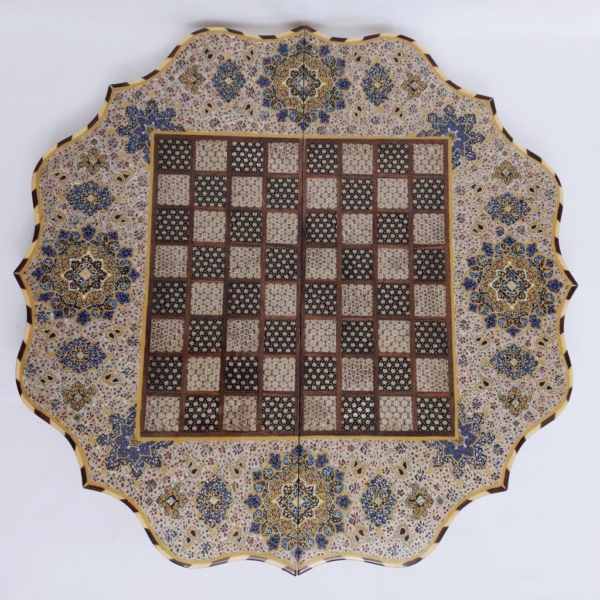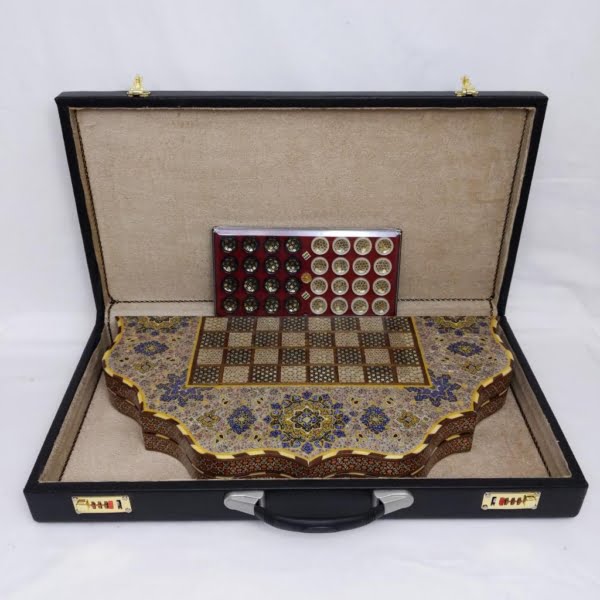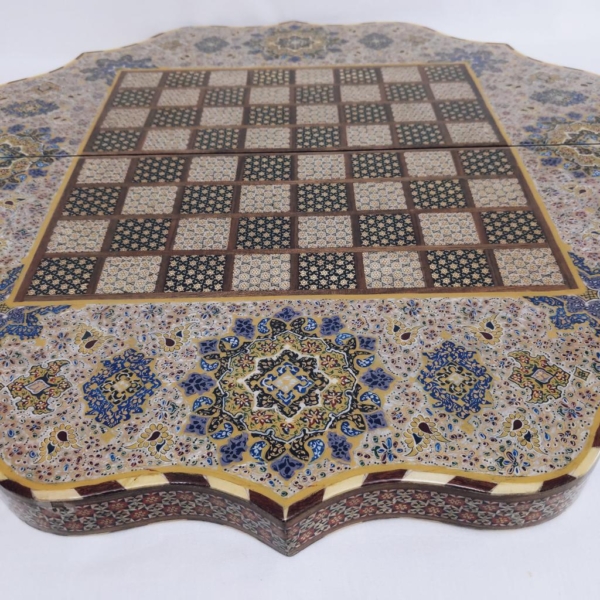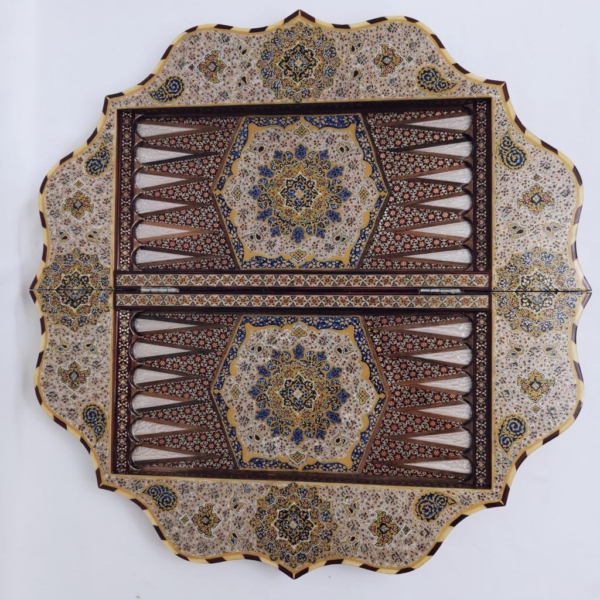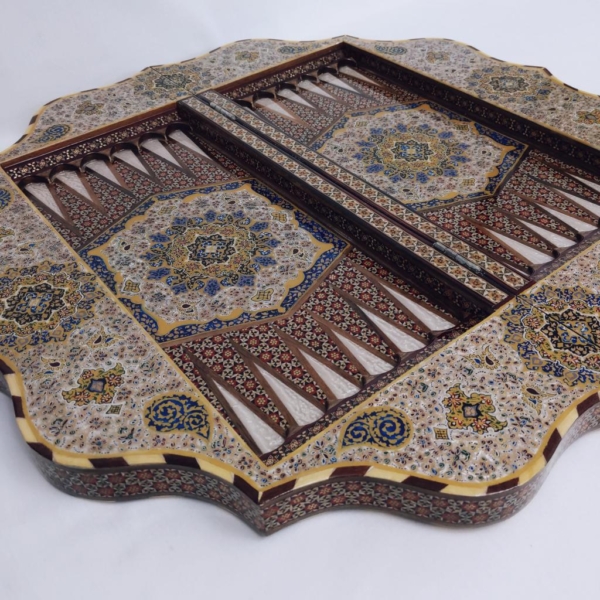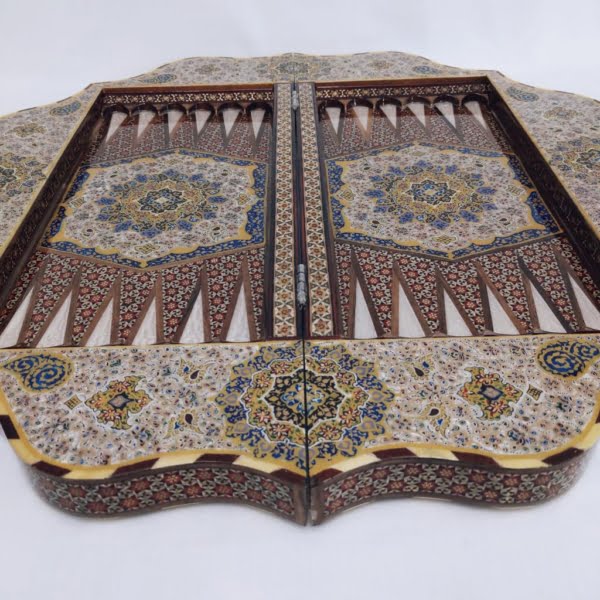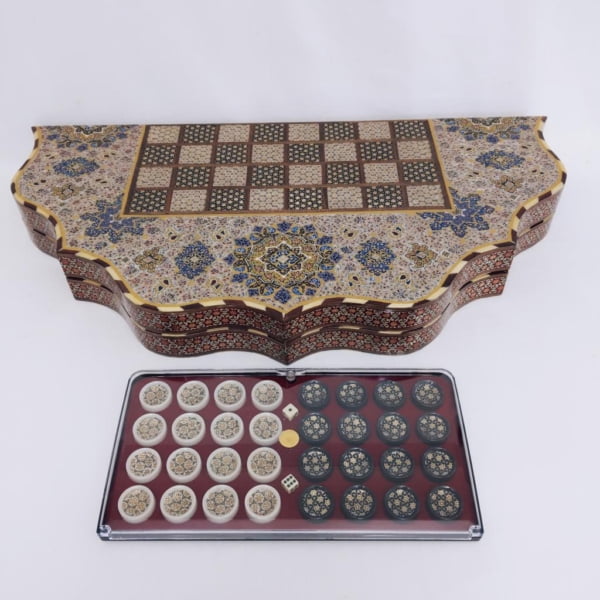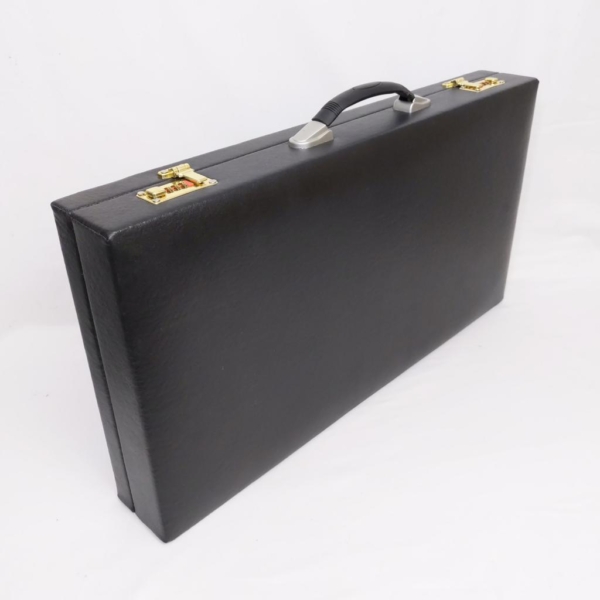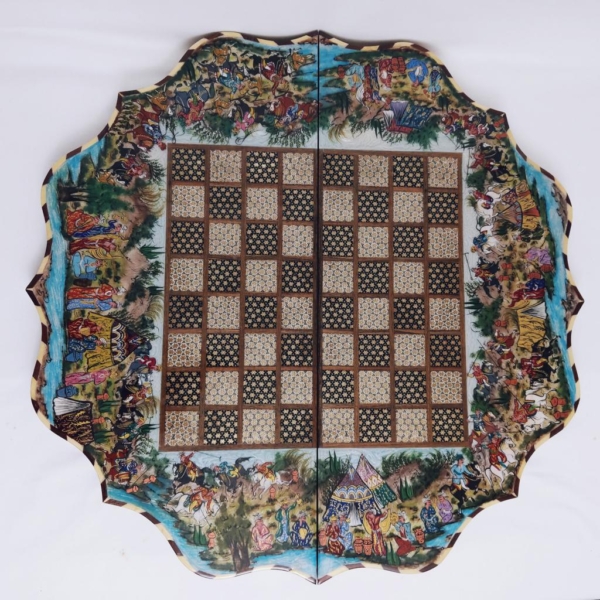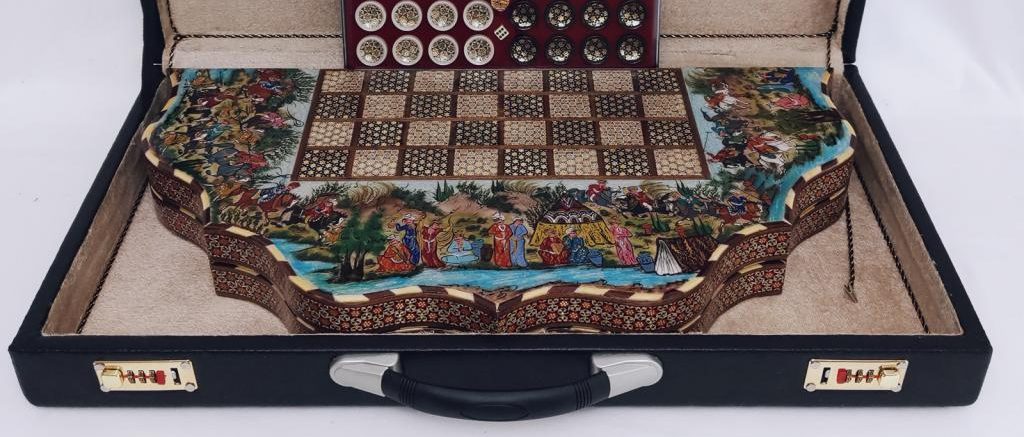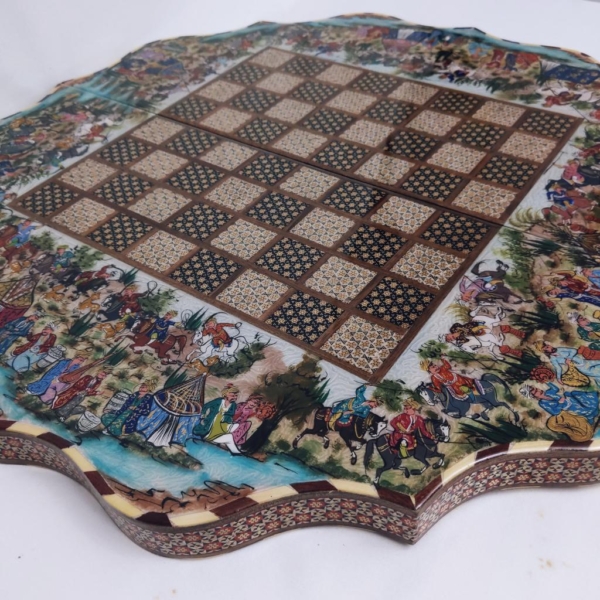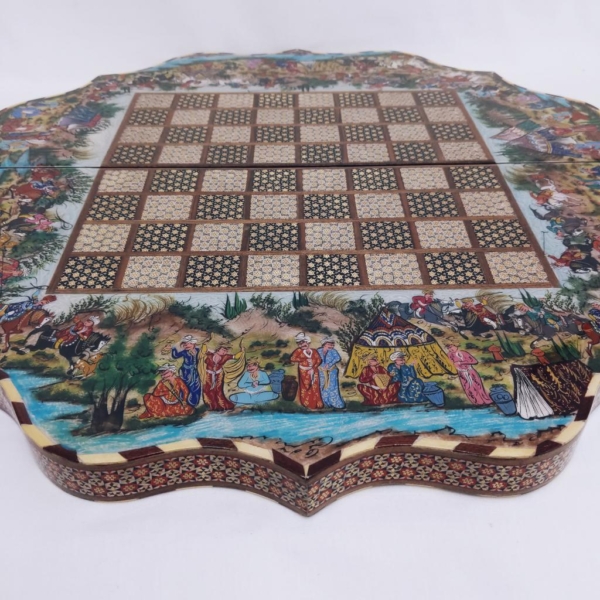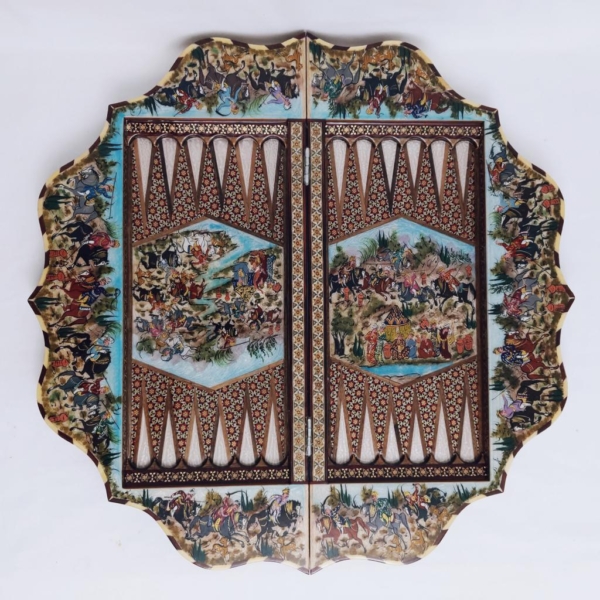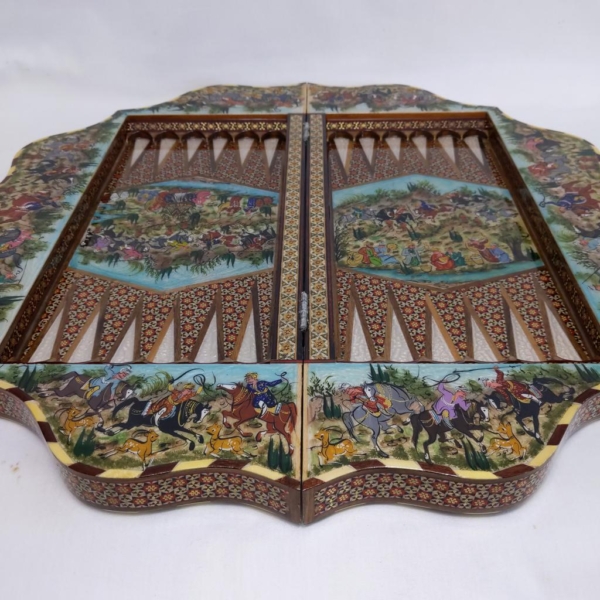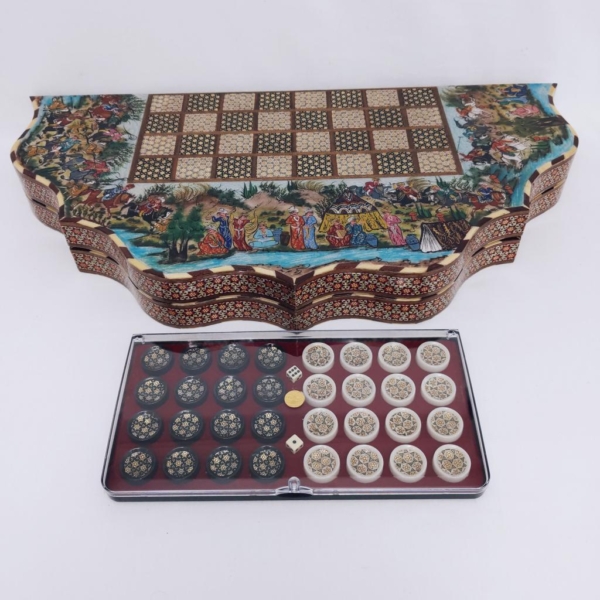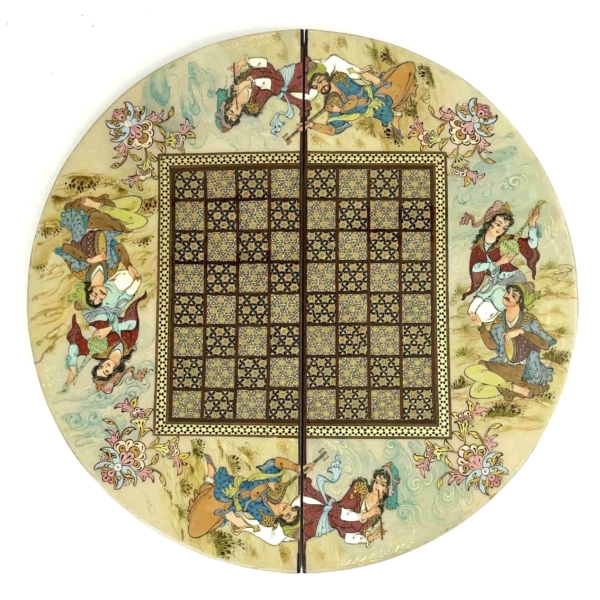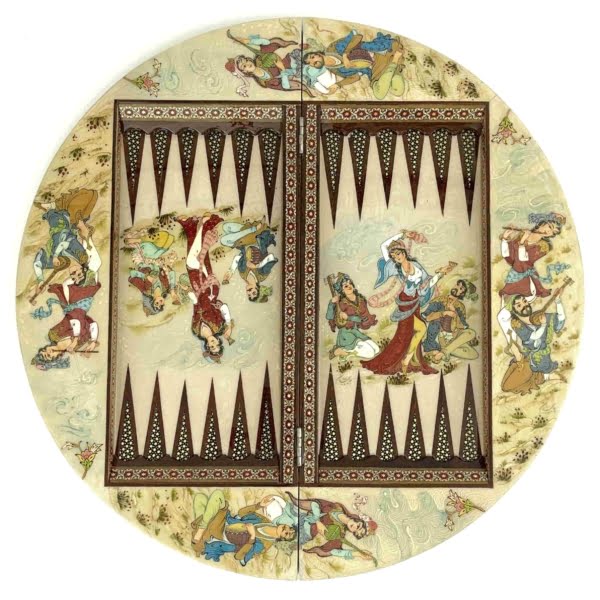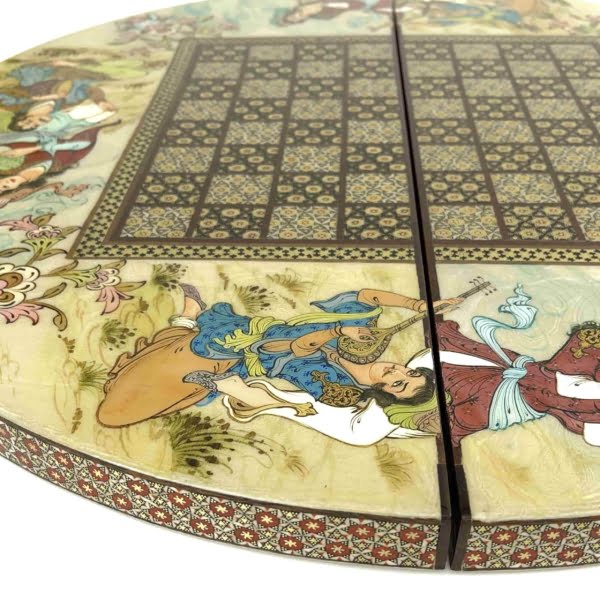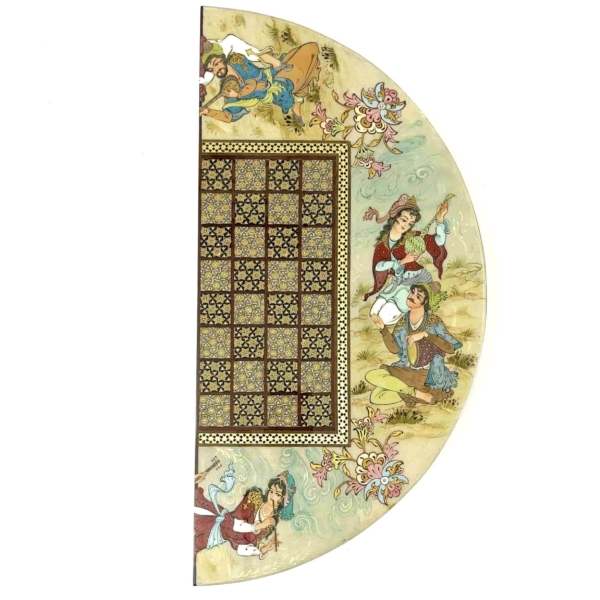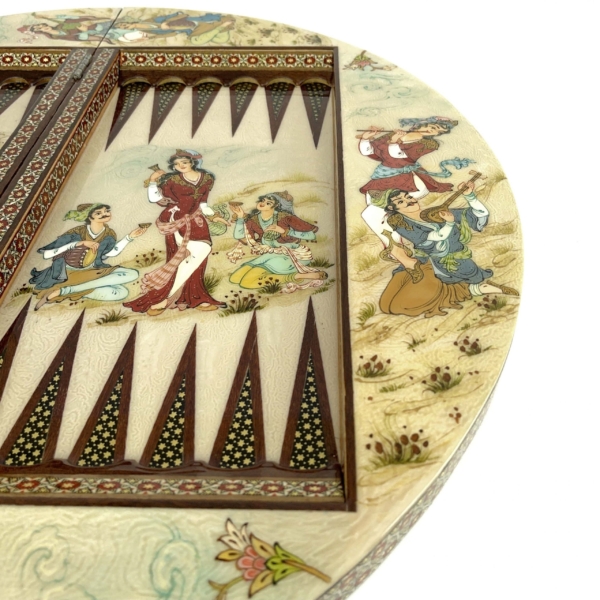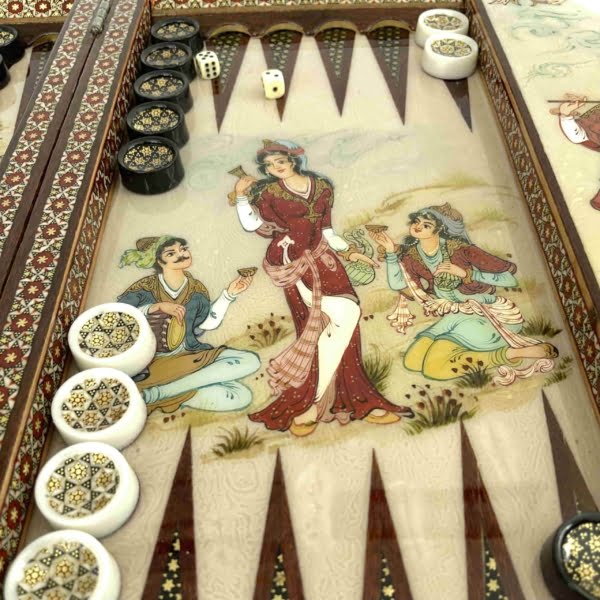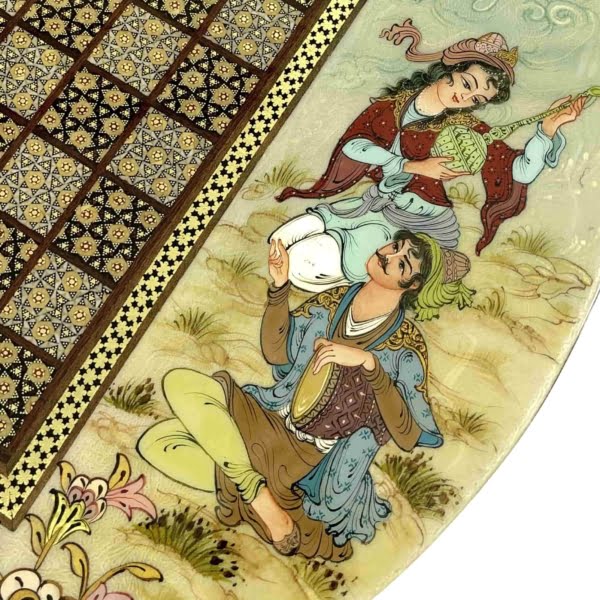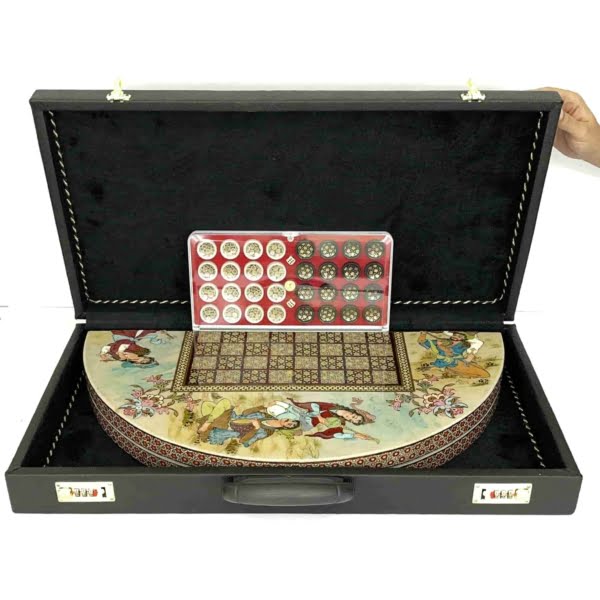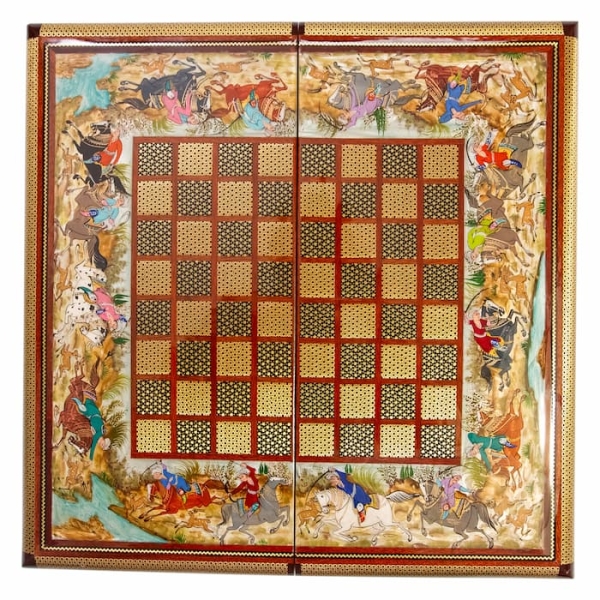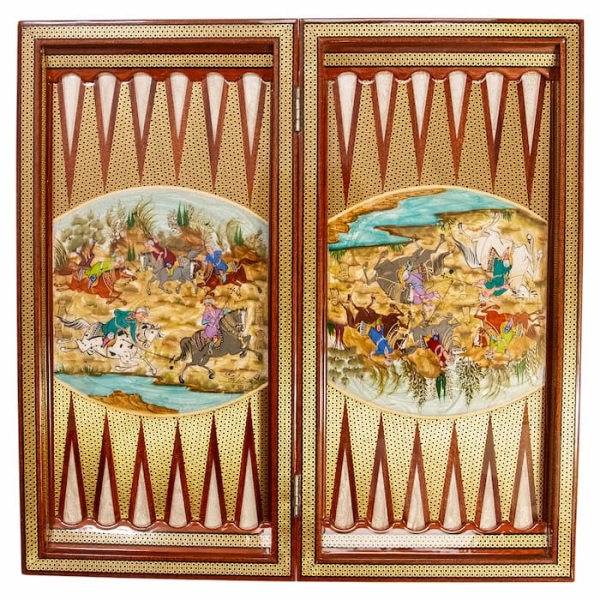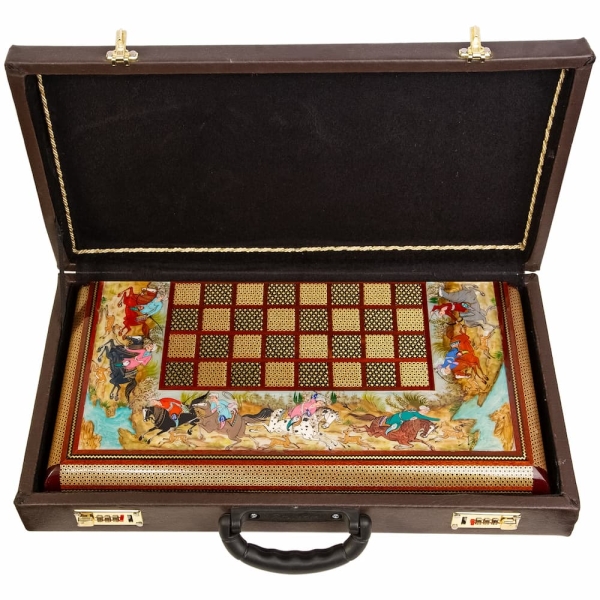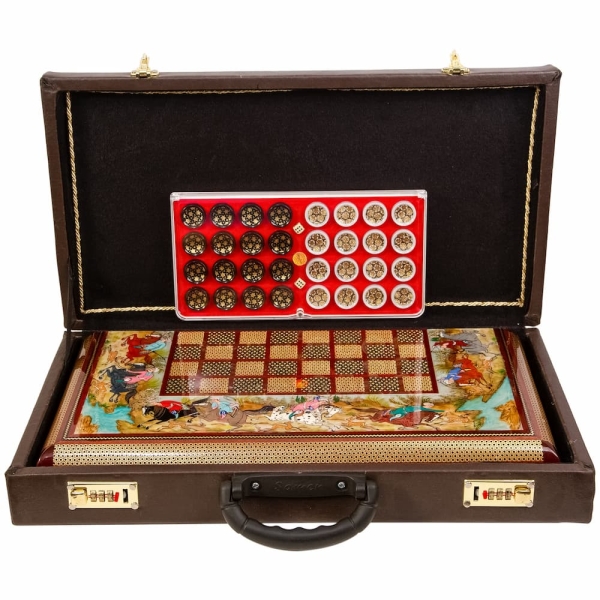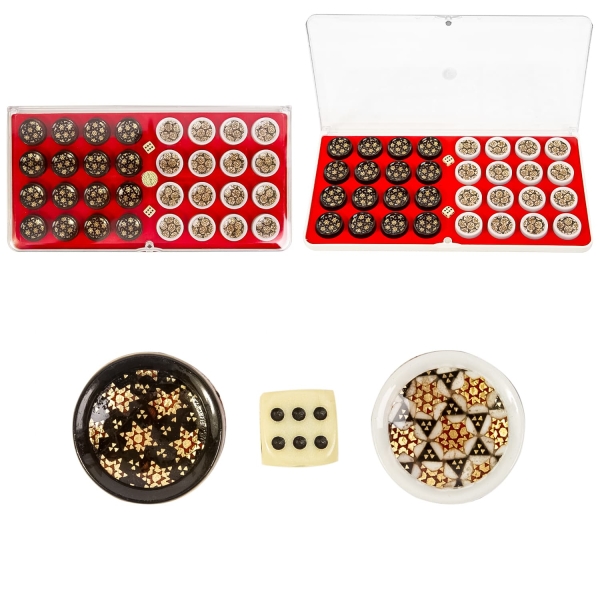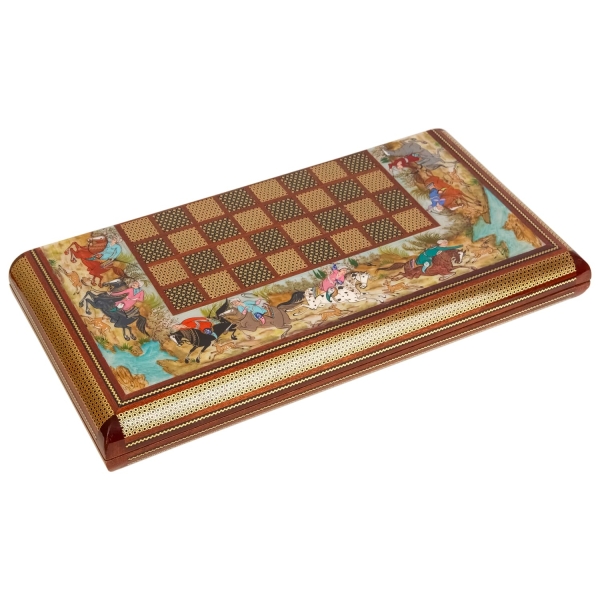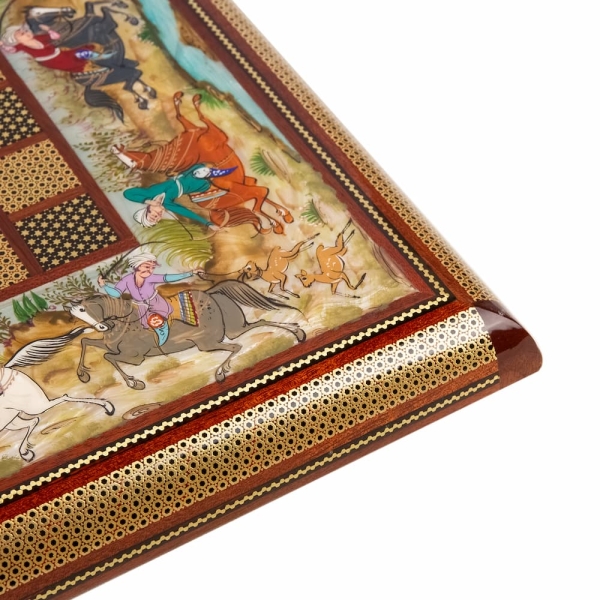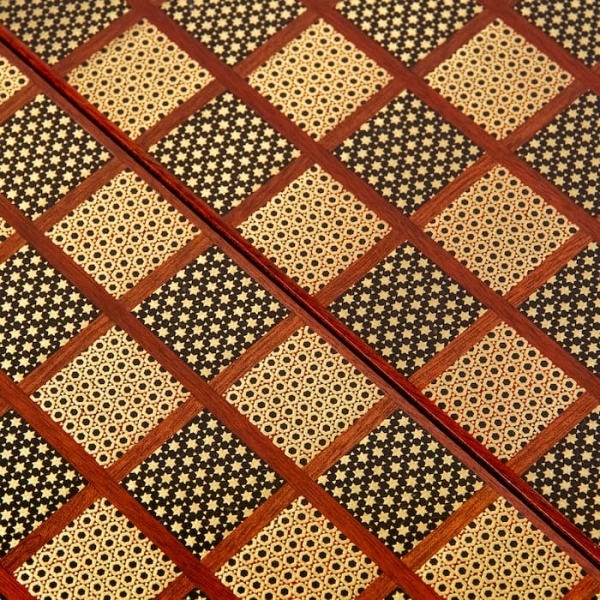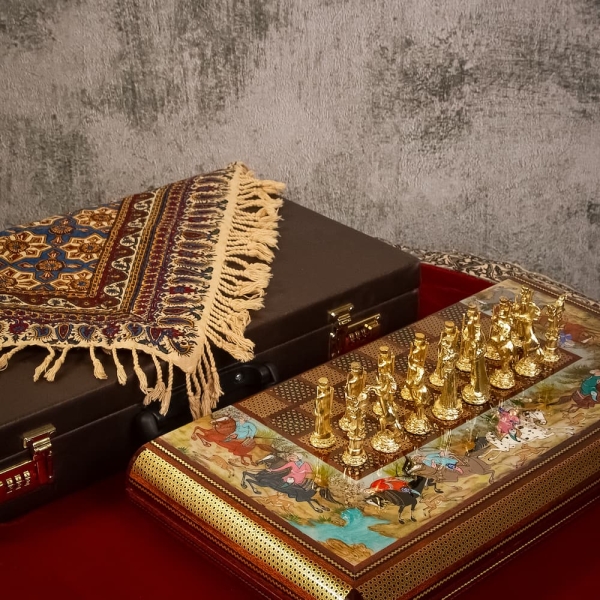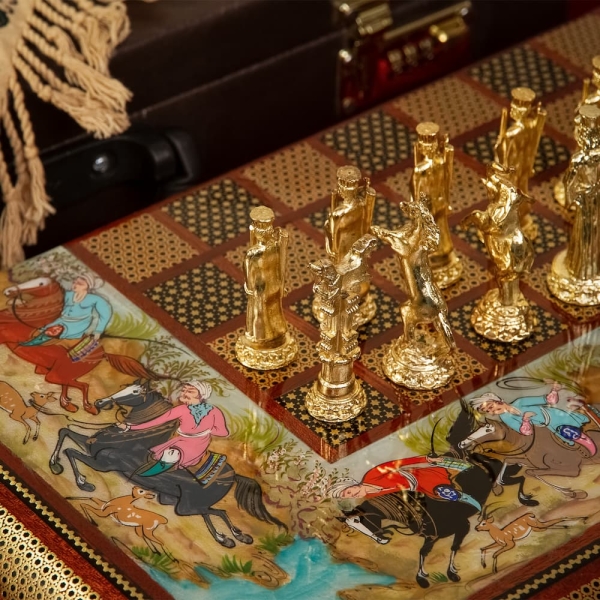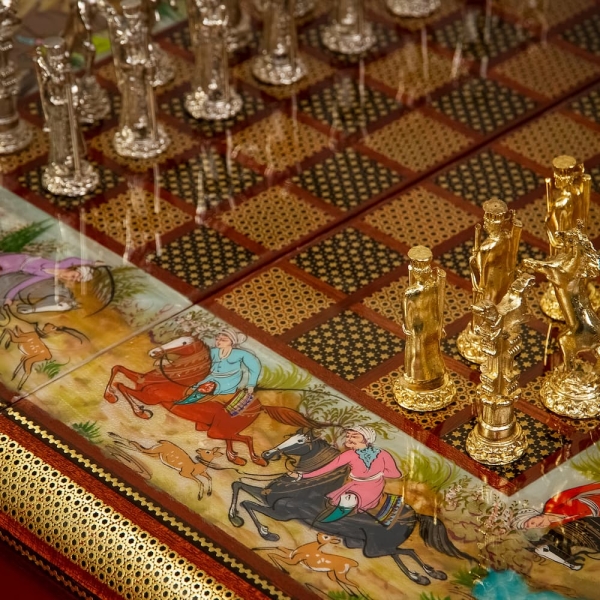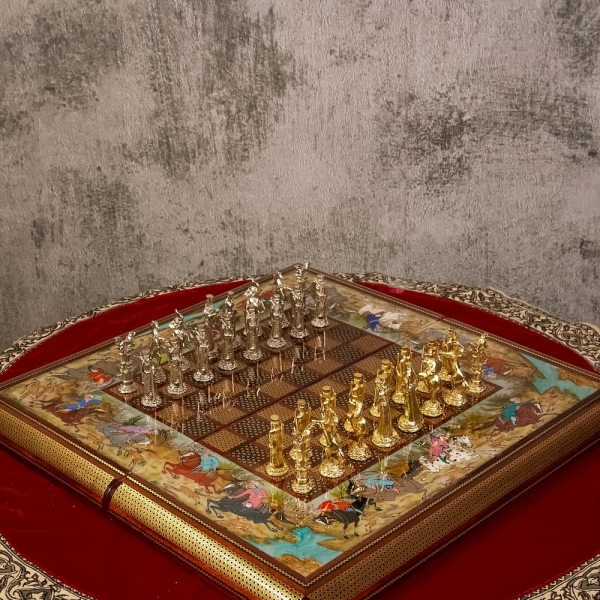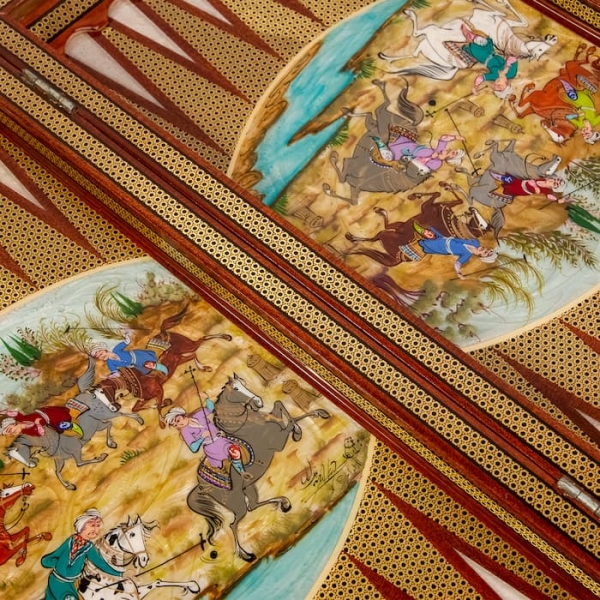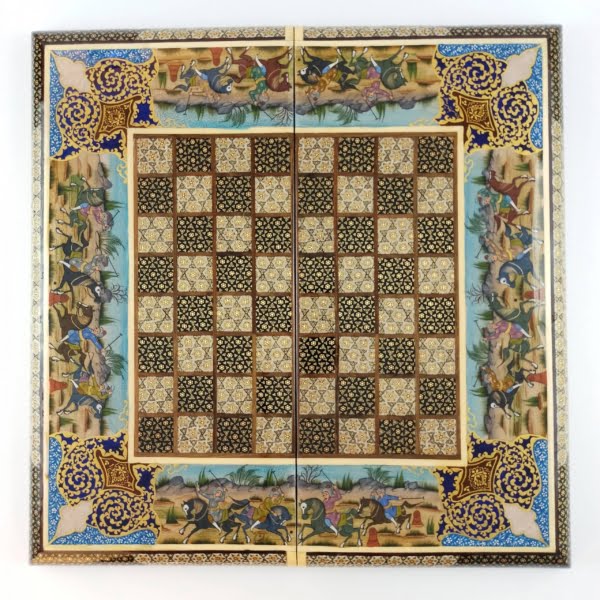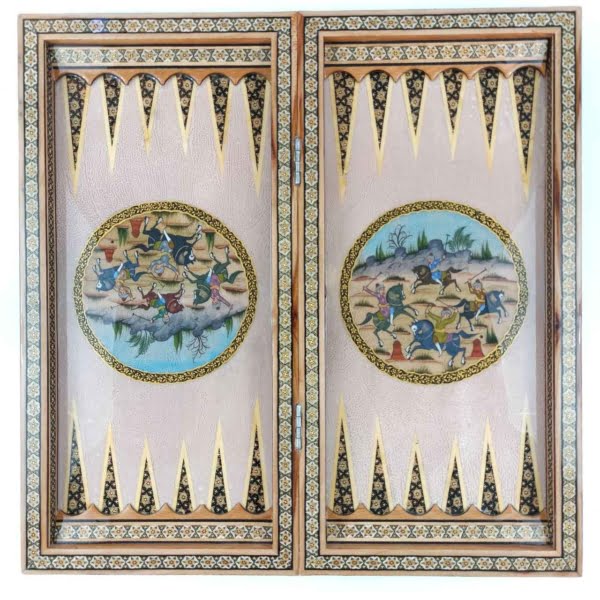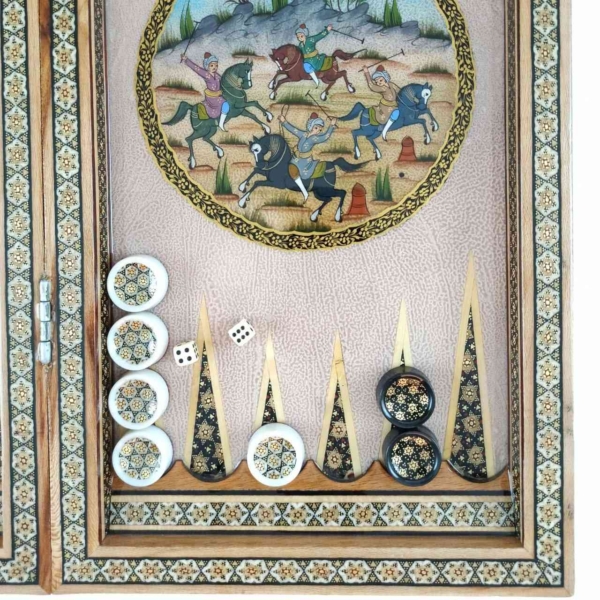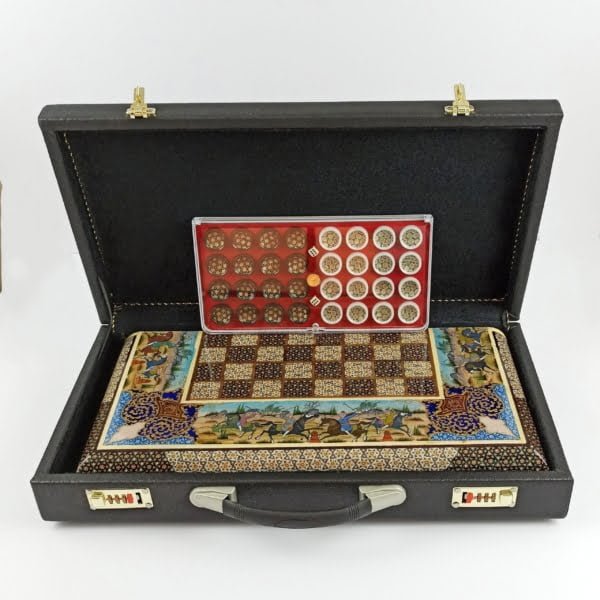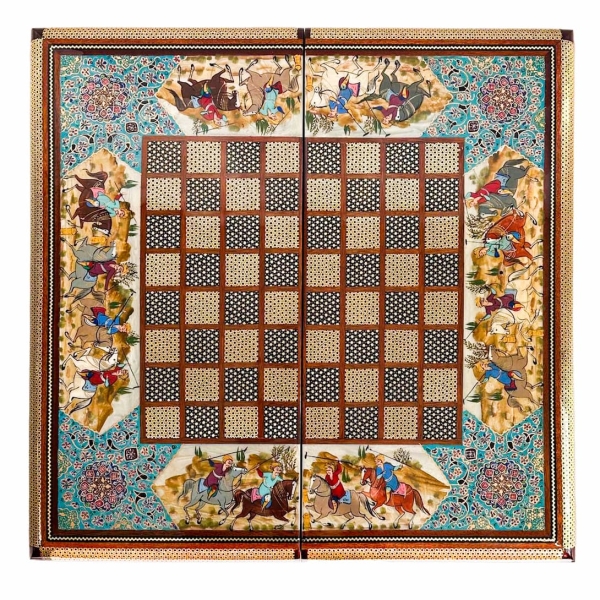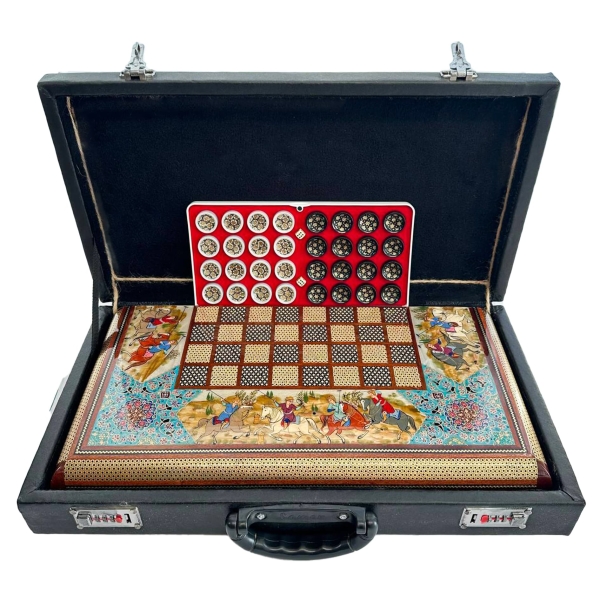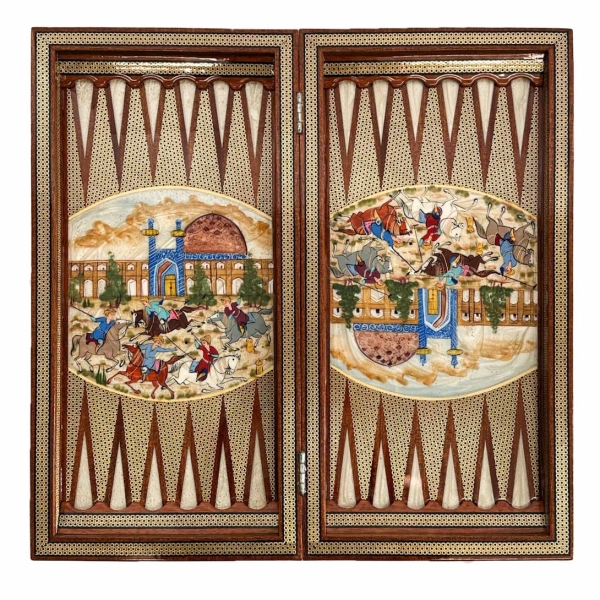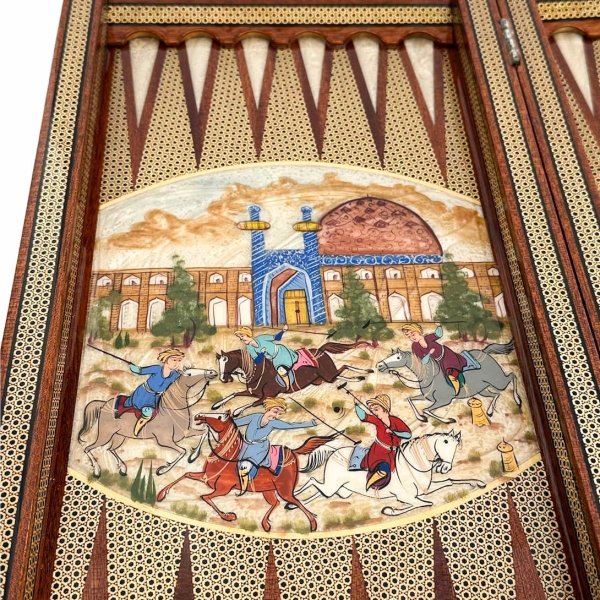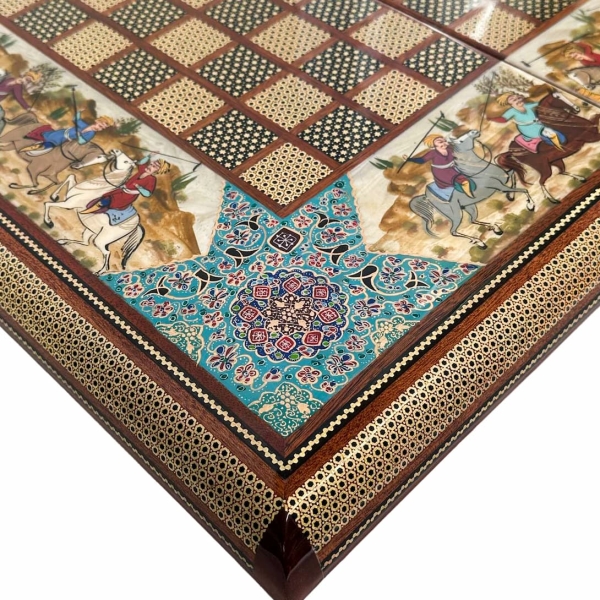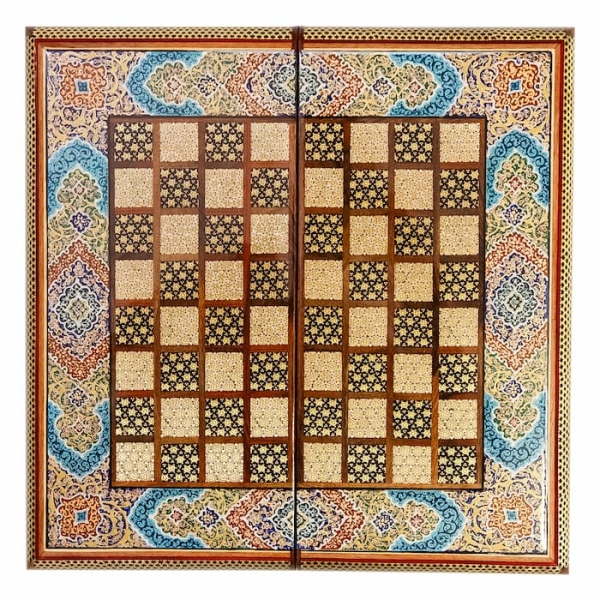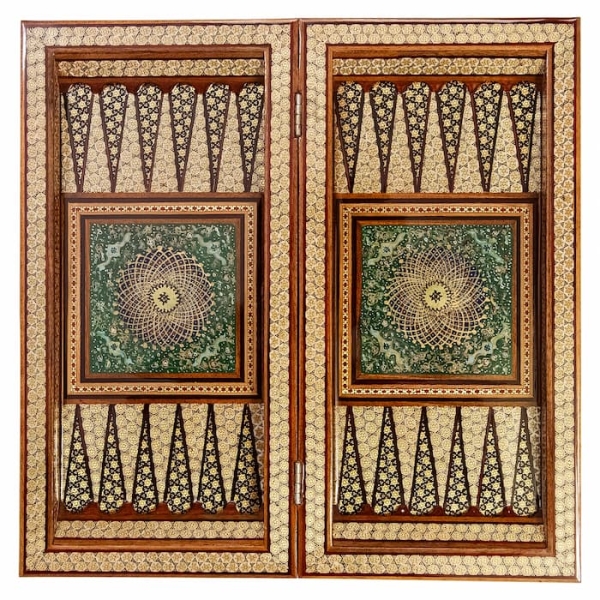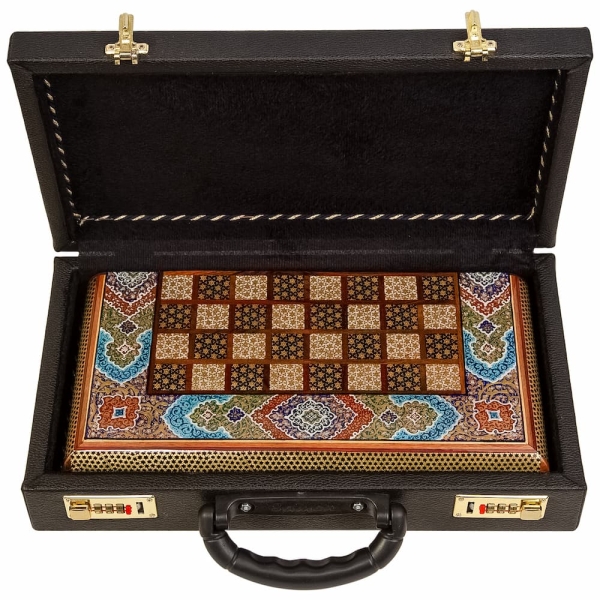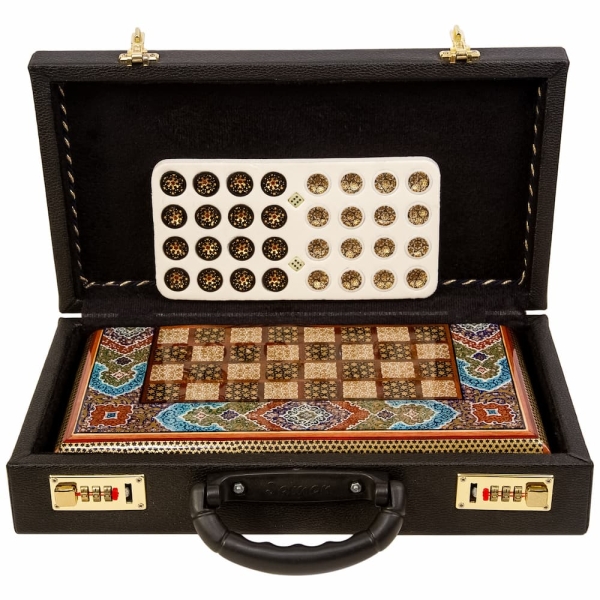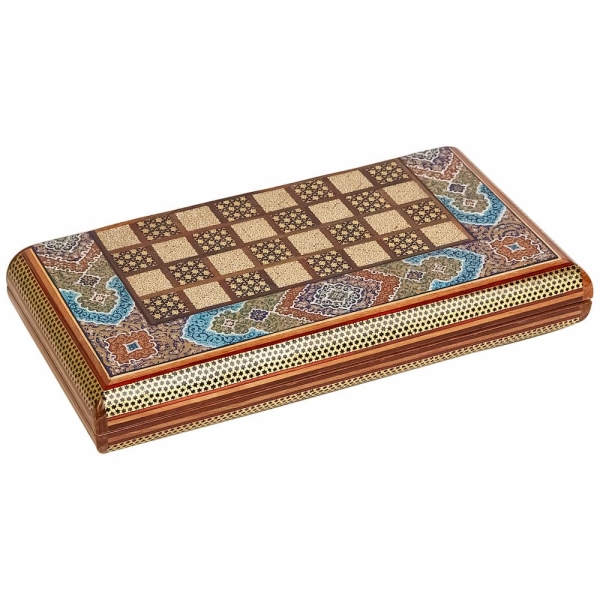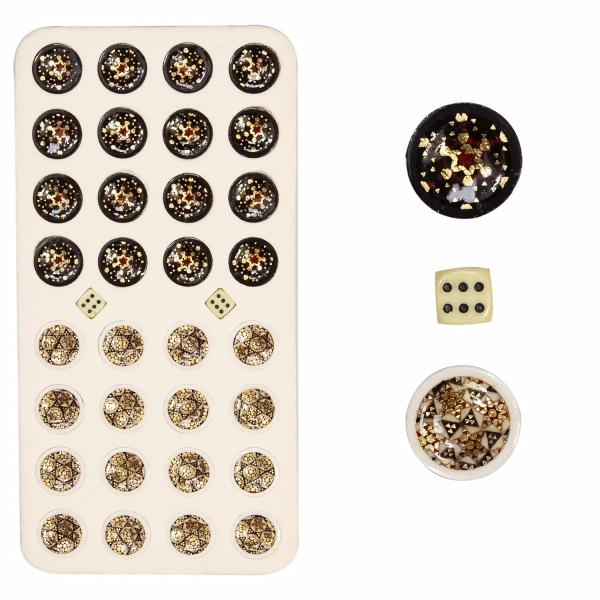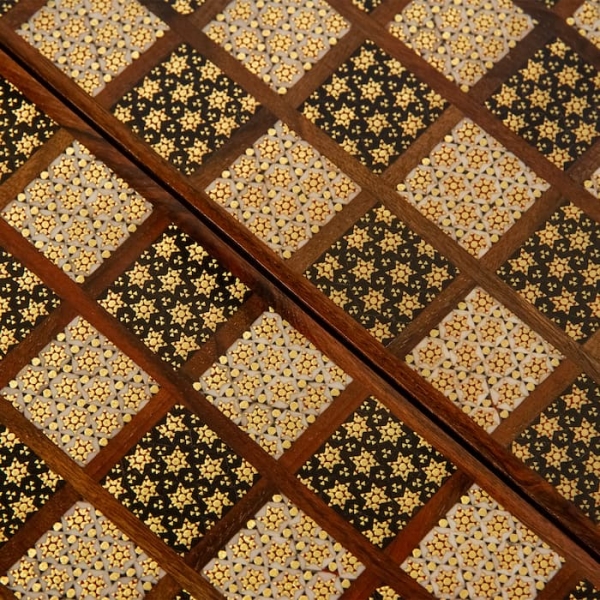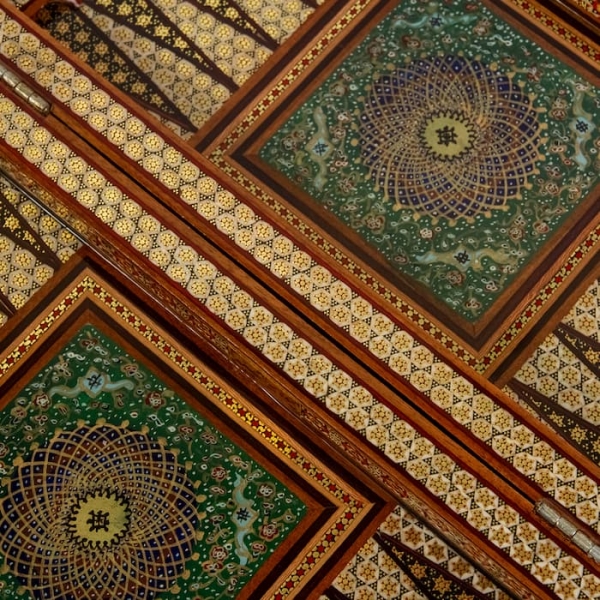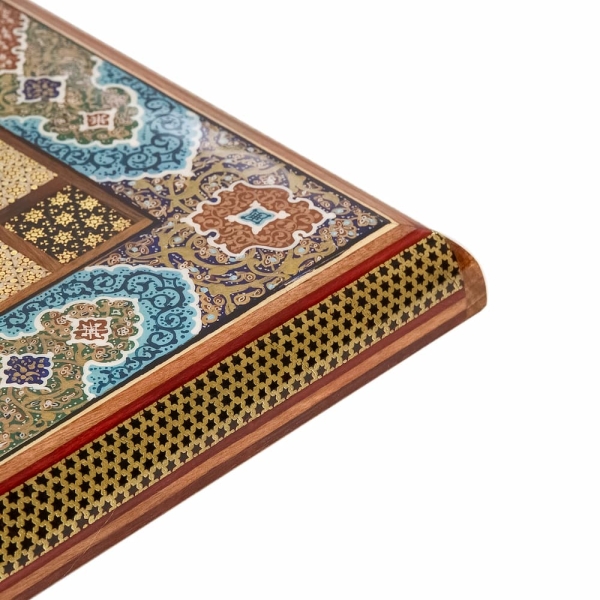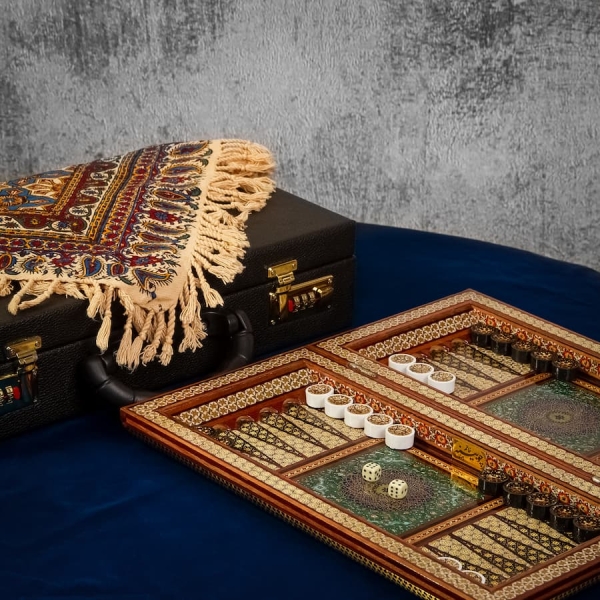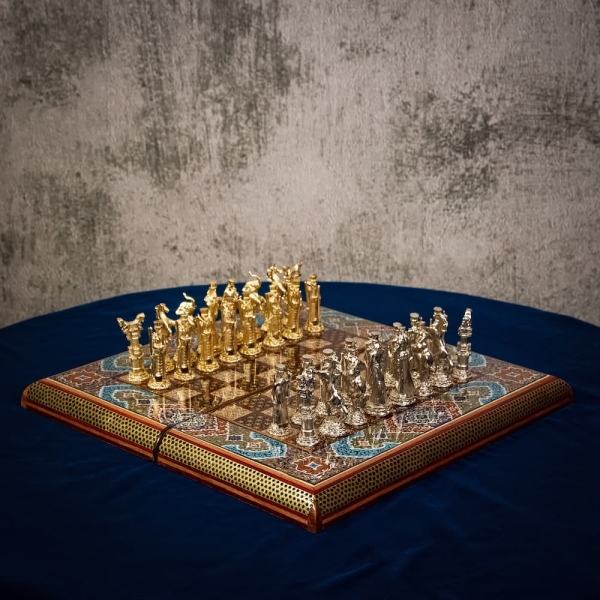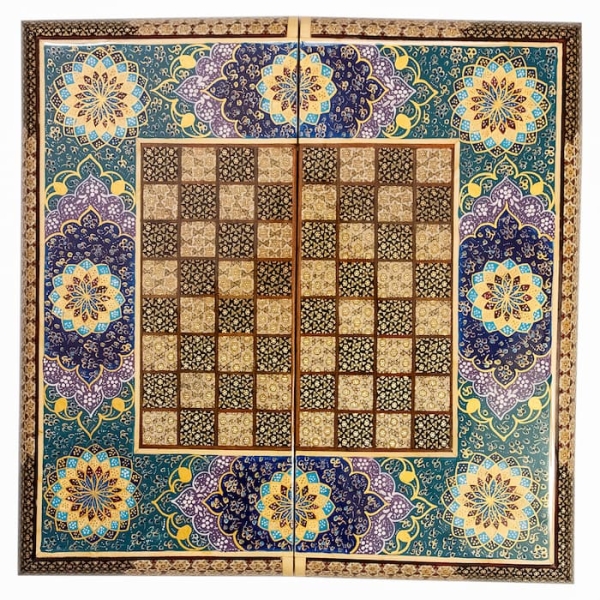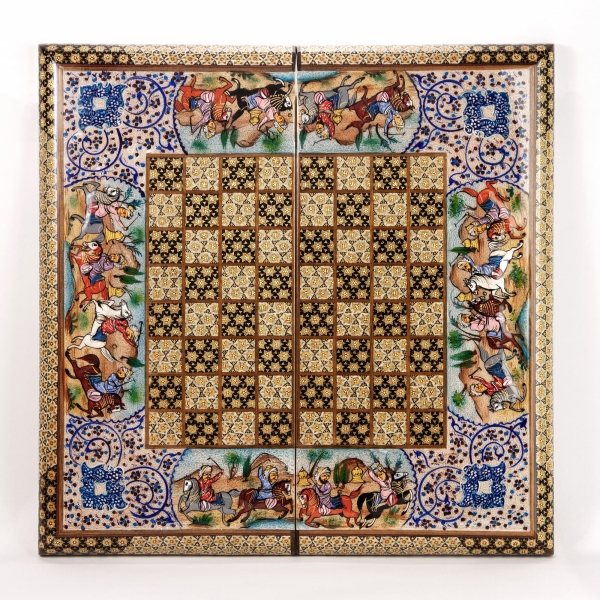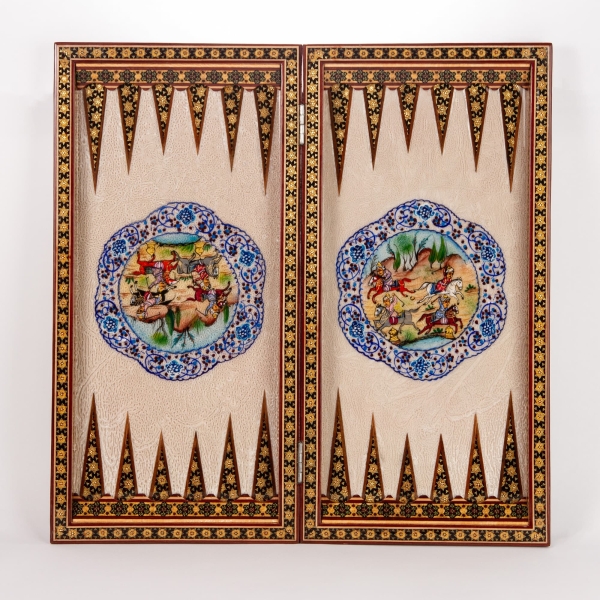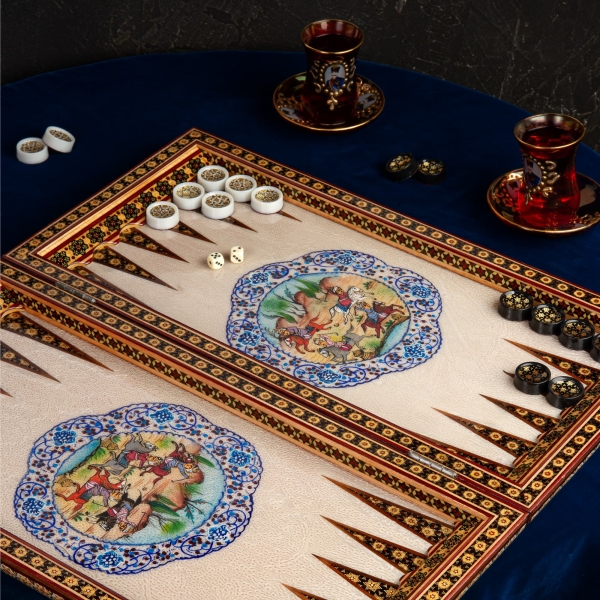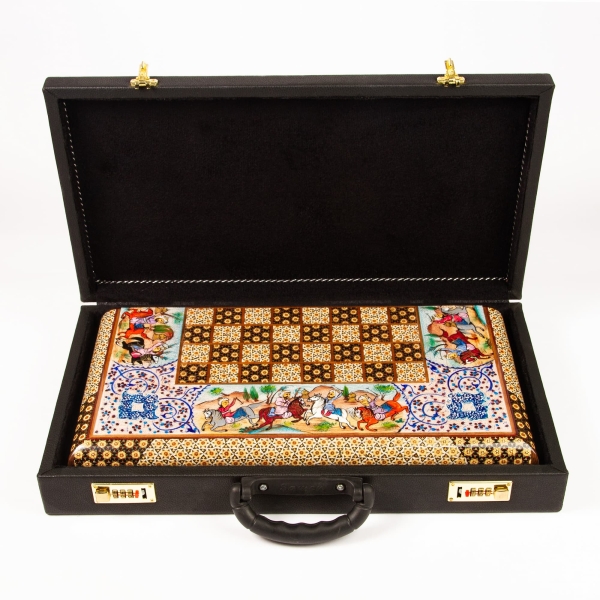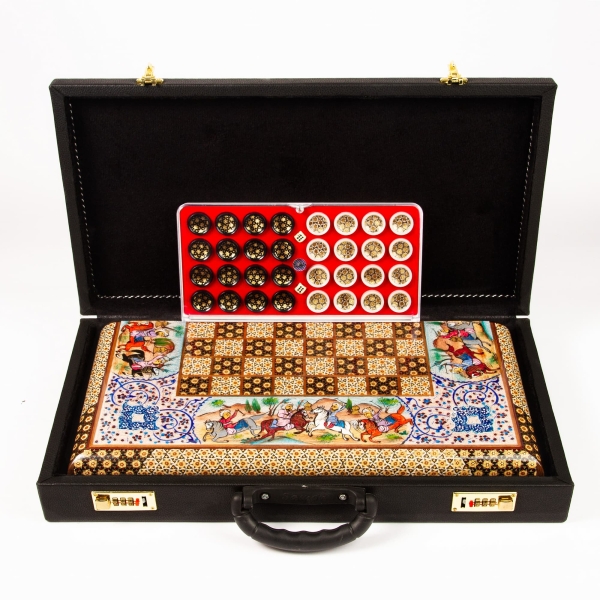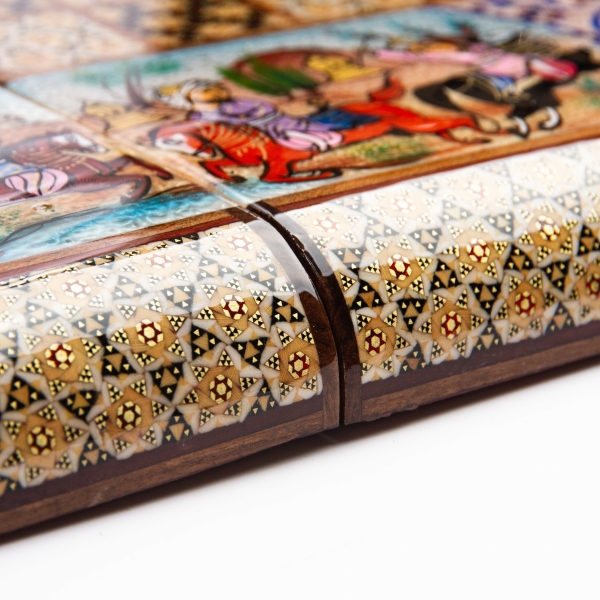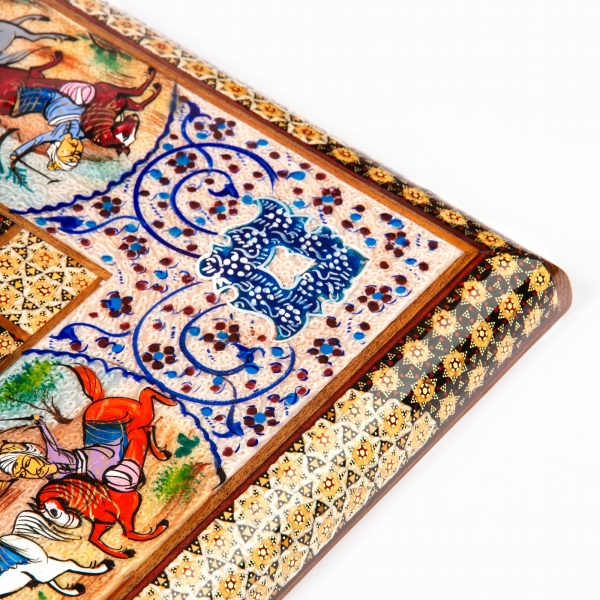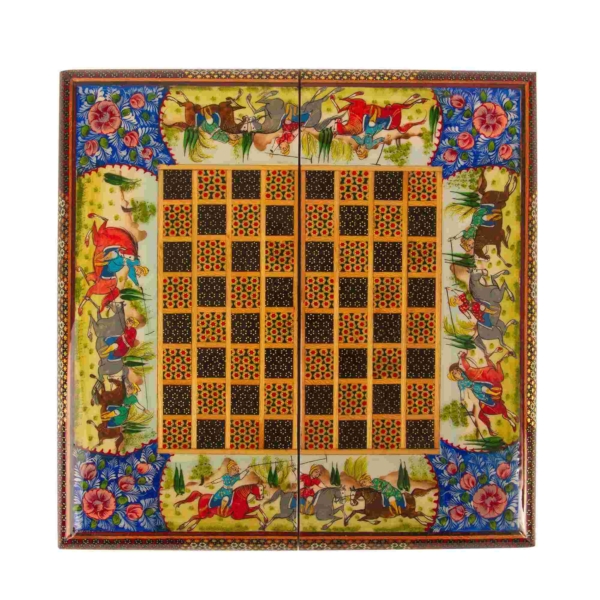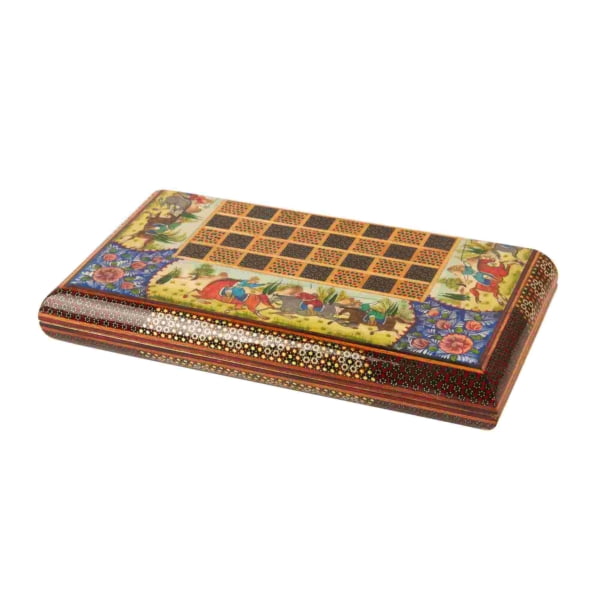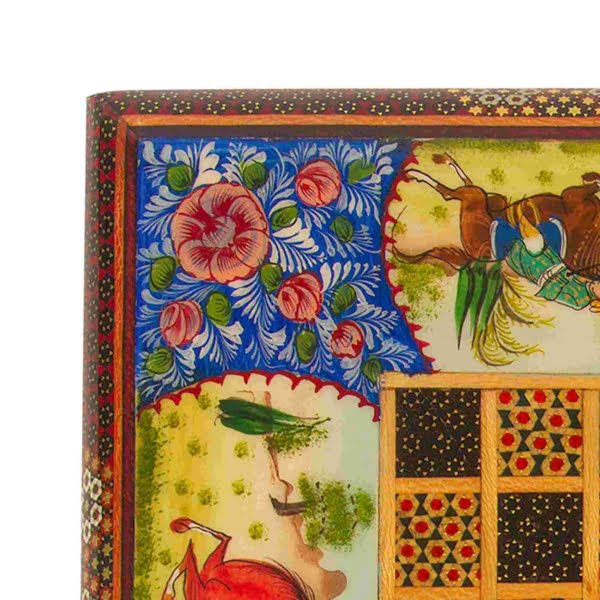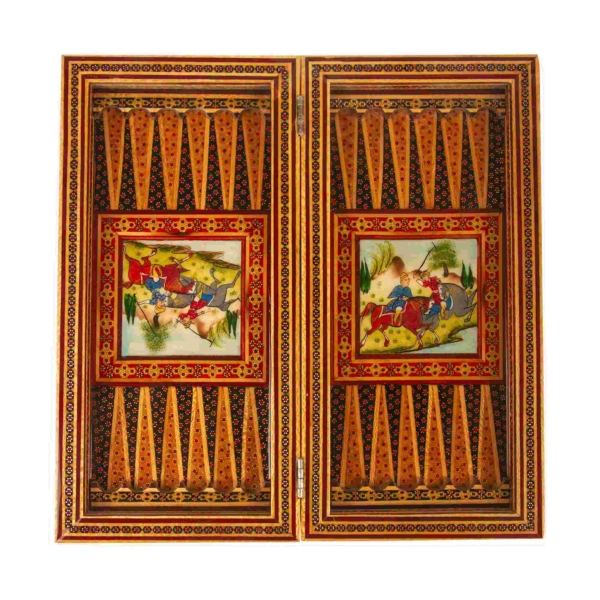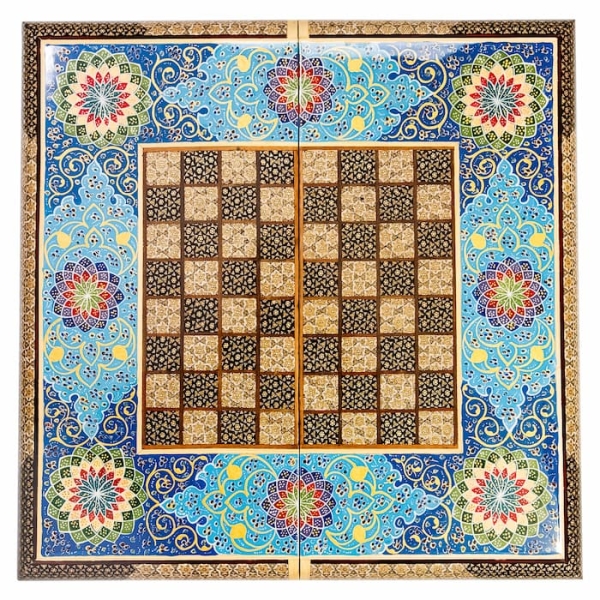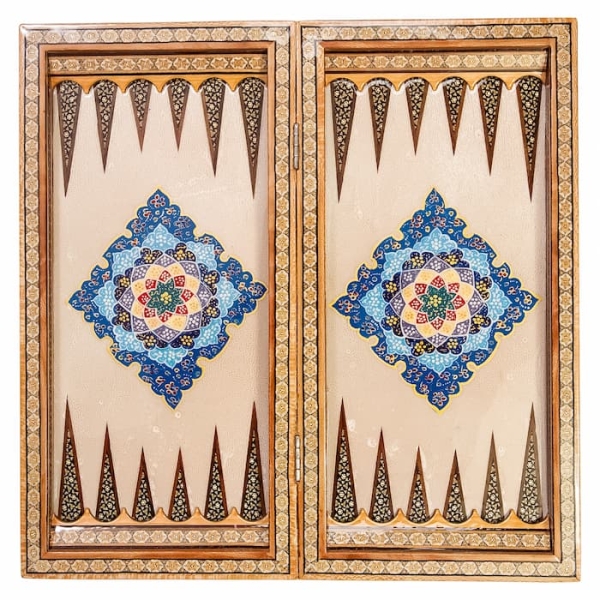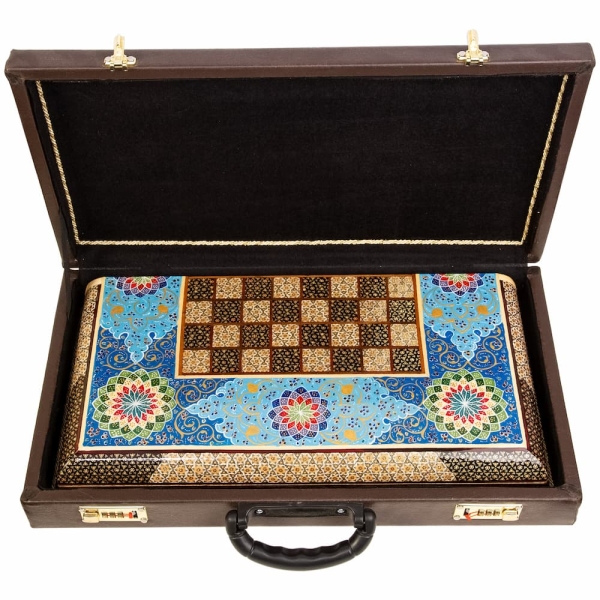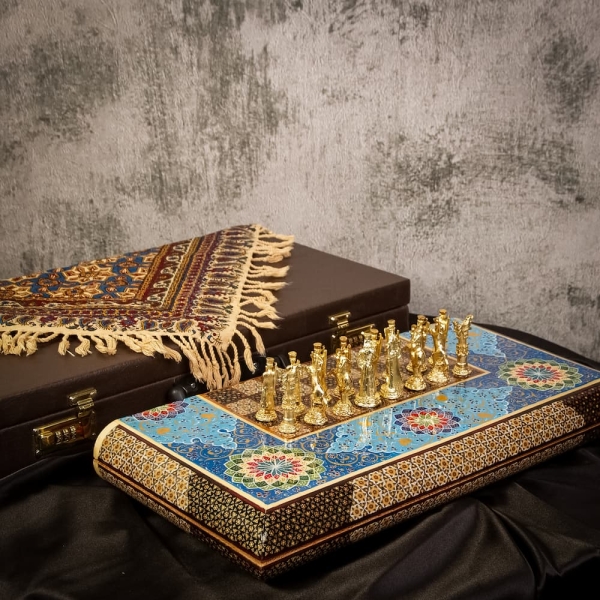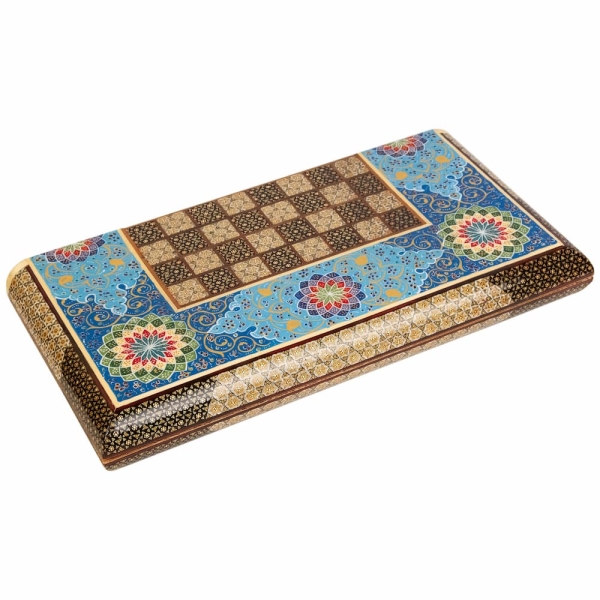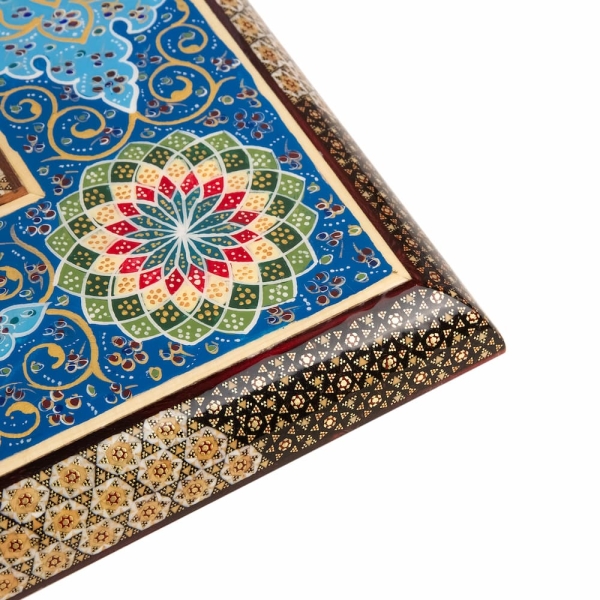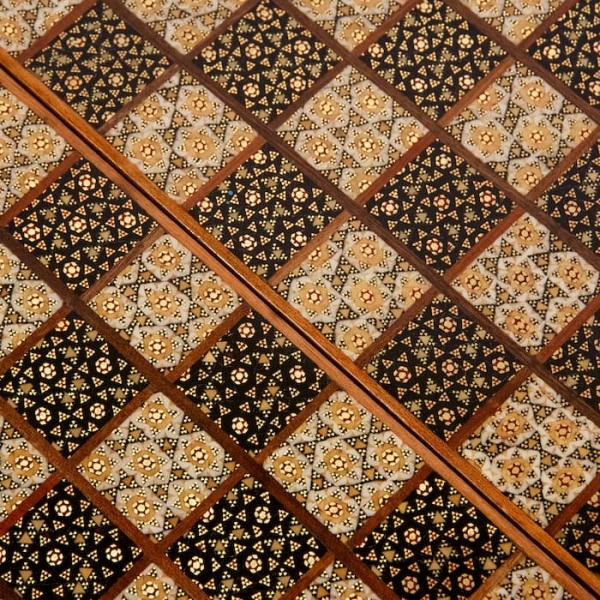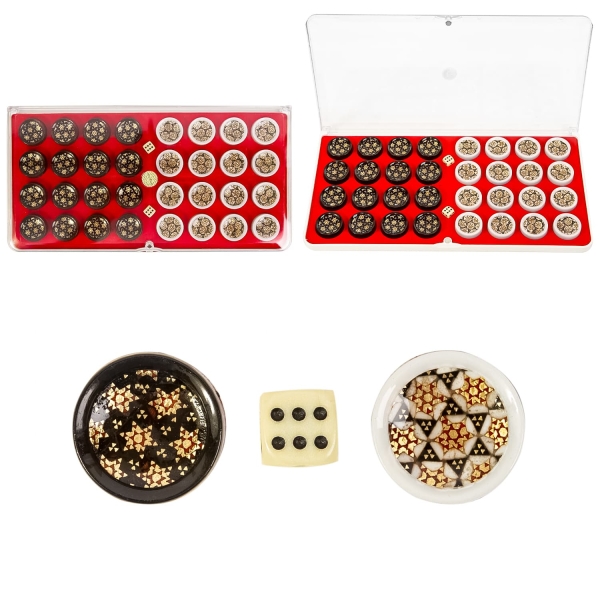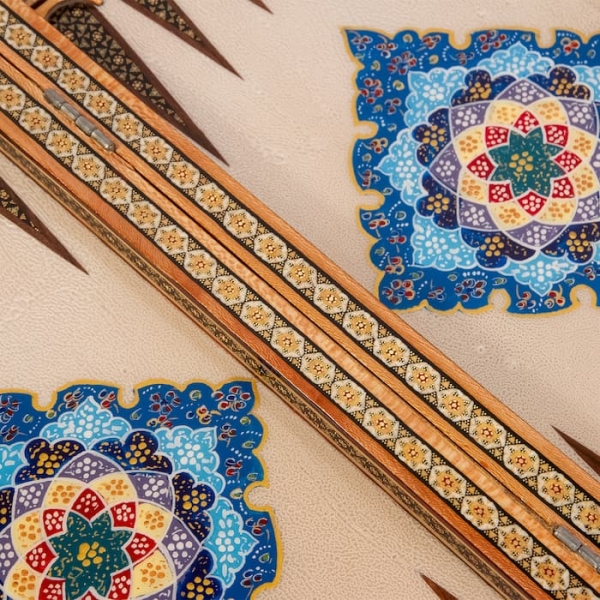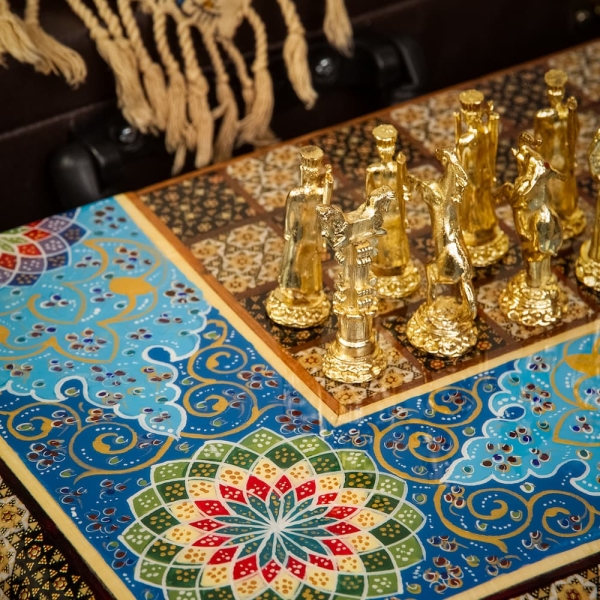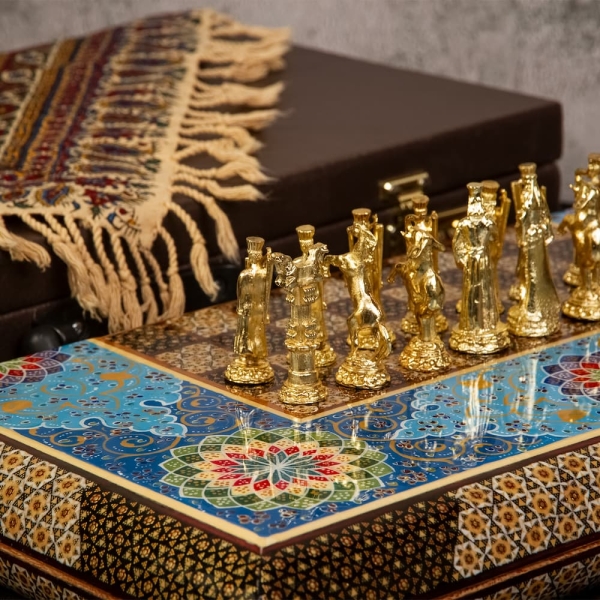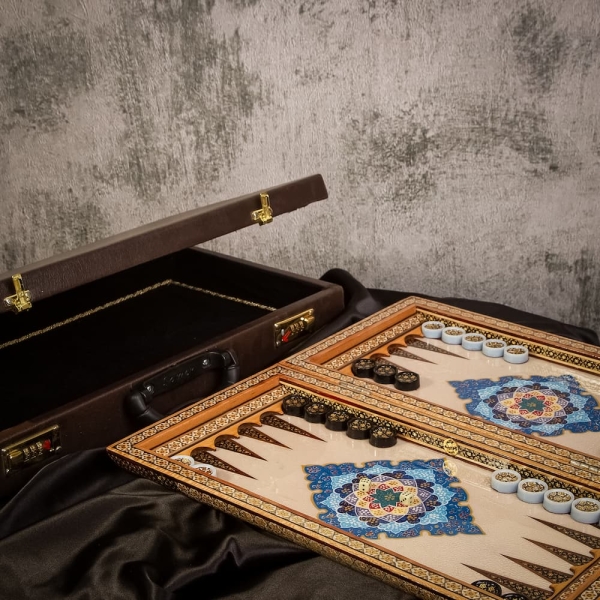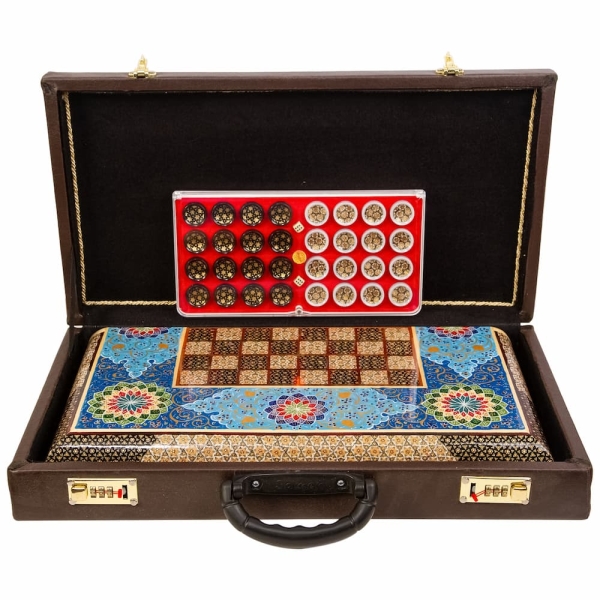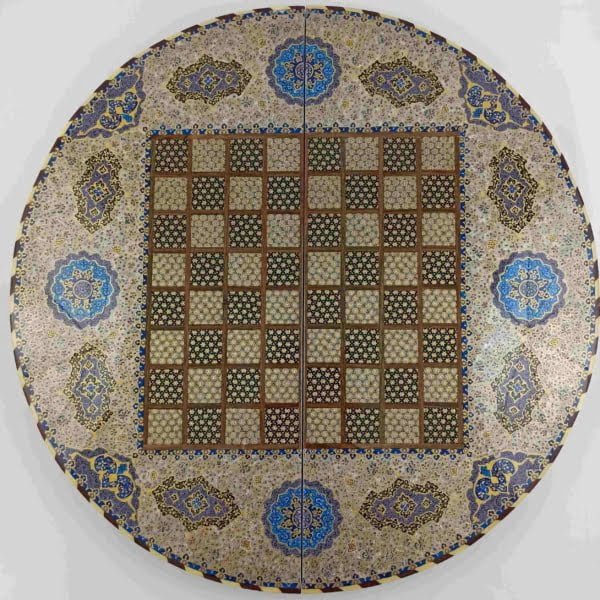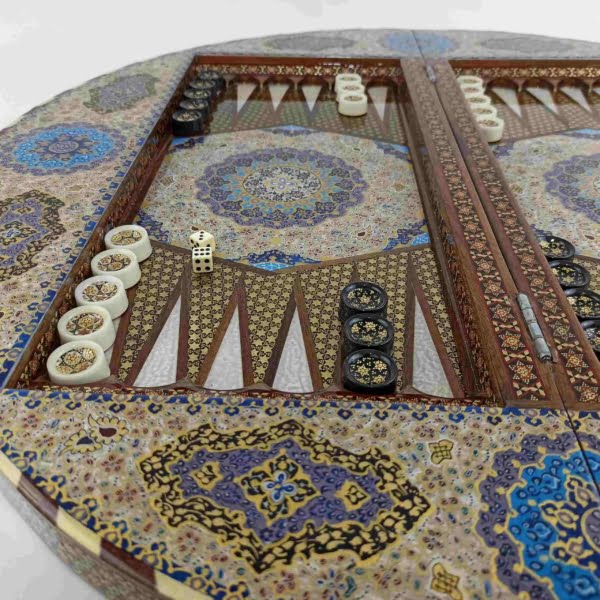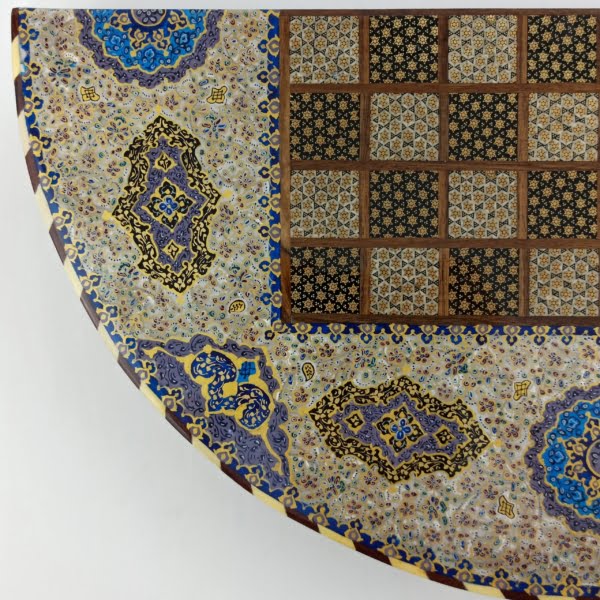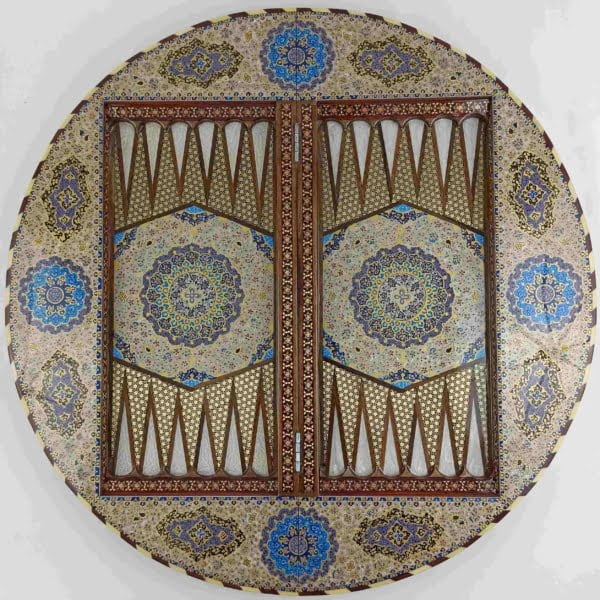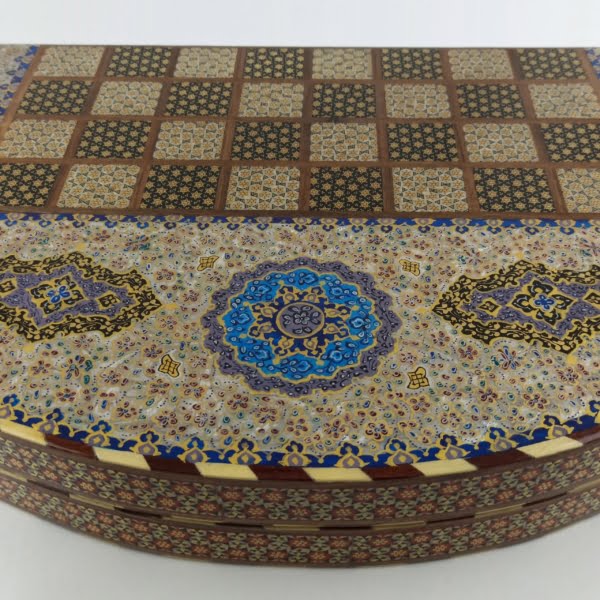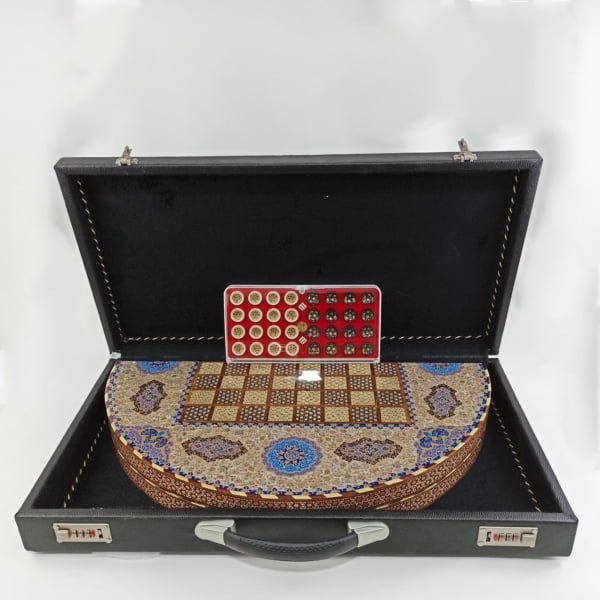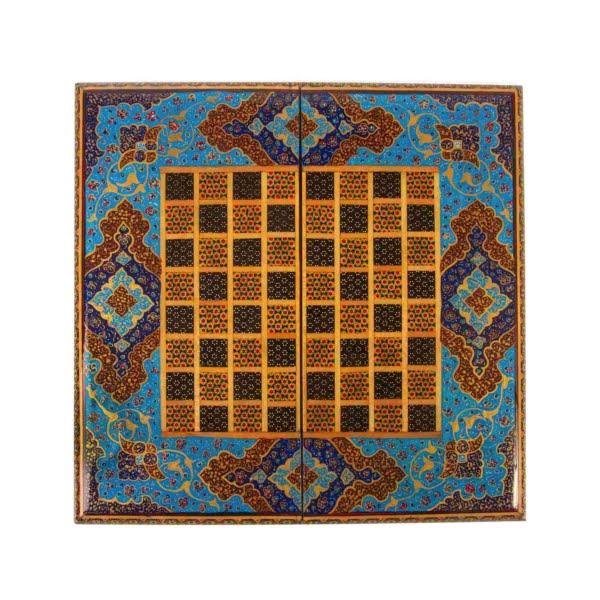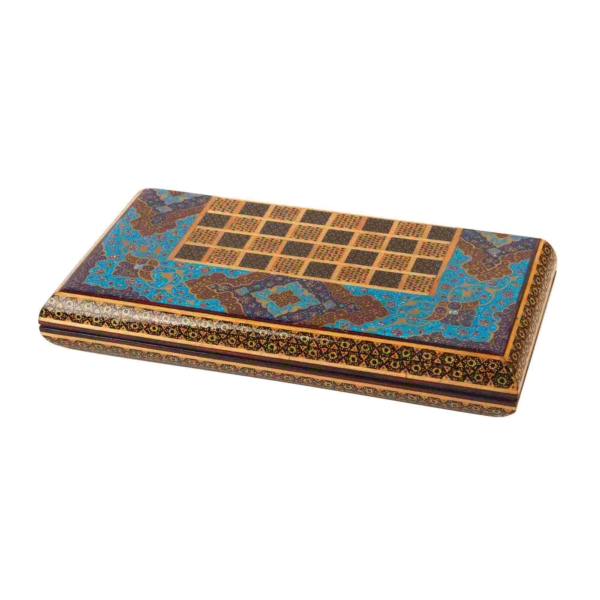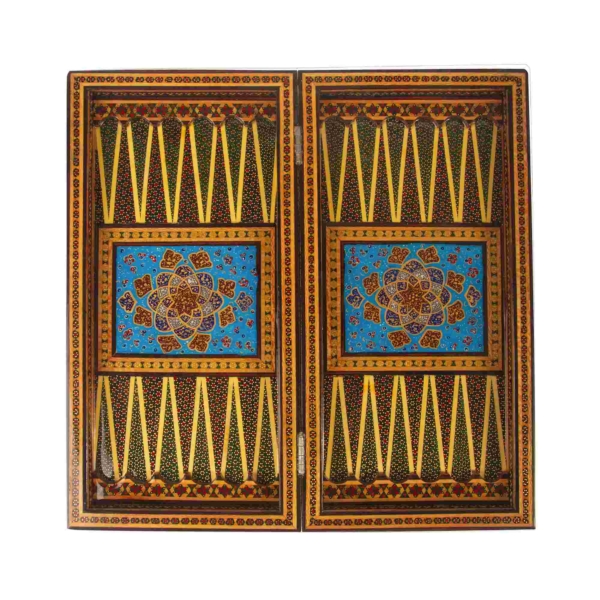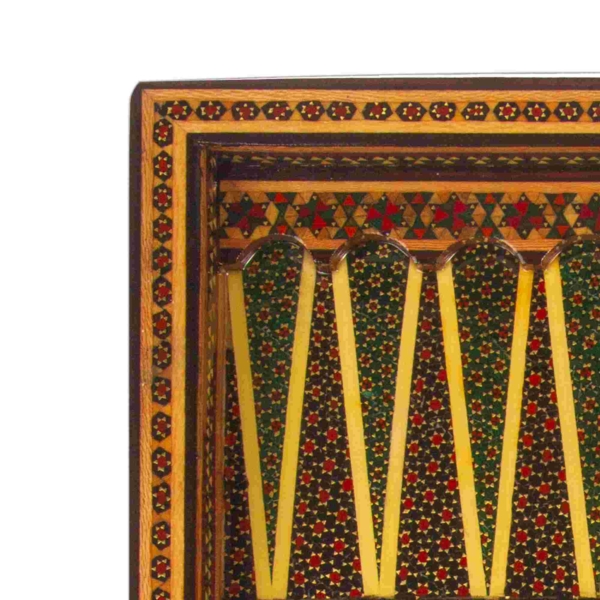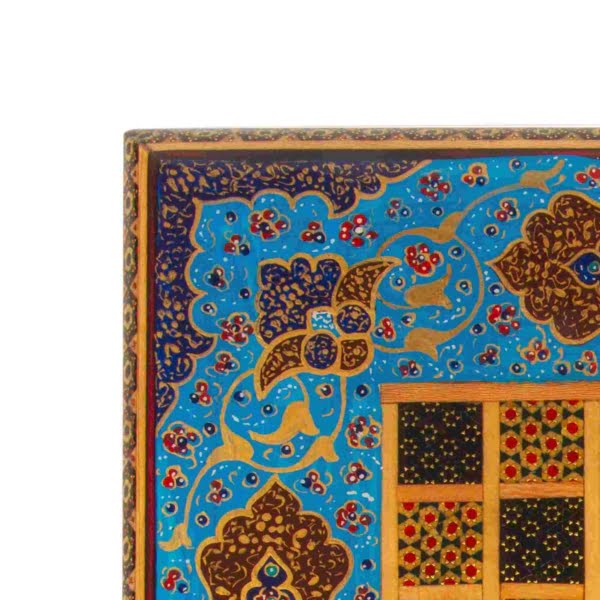Khatam Backgammon
Welcome to Persis Collection, your trusted source for authentic Persian Khatam Backgammon Boards. Our unique selection combines Iranian craftsmanship with the rich tradition of Khatamkari, offering elegant game boards that double as decorative masterpieces.
Persian Khatam Backgammon: The Art of Iranian Craftsmanship and Strategy
The Persian Khatam Backgammon board is not just a gaming piece; it’s a masterpiece of traditional Iranian art, skillfully combining the challenge of a beloved game with the timeless beauty of Khatamkari. Known for its intricate inlay work, Khatamkari is a centuries-old Persian art form that features delicate geometric designs made from fine materials such as wood, bone, and metal. At Persis Collection, we offer an exclusive selection of handmade Persian backgammon boards that serve as both functional games and decorative art pieces. Whether you’re an enthusiast of traditional craftsmanship or looking to add a touch of cultural elegance to your home, these Persian Khatam backgammon sets make an exceptional choice.
The Craftsmanship Behind Persian Khatam Backgammon Boards
Khatamkari, one of Iran’s oldest and most intricate art forms, is the craft of creating detailed patterns using tiny geometric pieces of wood, bone, and metal. Persian Khatam Backgammon boards are carefully crafted by skilled artisans who dedicate time and expertise to produce one-of-a-kind designs. Each board is unique, with layers of inlay work that highlight the meticulous artistry and cultural significance of Khatamkari.
The History and Origins of Khatamkari
Khatamkari, also known as inlay work, dates back to the Safavid dynasty when Persian artisans developed the technique to decorate royal palaces, doors, and furnishings. This technique later flourished in Isfahan and Shiraz, where artists began to expand Khatamkari into different applications, including Persian Khatam backgammon boards. The inlay work found on these backgammon boards echoes this ancient heritage, combining traditional designs with the functional beauty of a game cherished across centuries.
Materials and Techniques in Khatamkari
Creating a Khatam backgammon board involves a variety of natural materials like walnut, camel bone, brass, and sometimes even mother-of-pearl. These materials are cut into tiny, precise pieces, which are then carefully arranged and glued to form symmetrical patterns, such as stars and polygons. Once assembled, the board undergoes a polishing process that enhances its glossy finish, preserving the intricate details of the artwork. The result is a durable and visually stunning game board that can be enjoyed for both playing and display.
Persian Khatam Backgammon: Game and Art Combined
The allure of a Persian Khatam backgammon set extends beyond gameplay. It’s a beautiful decorative piece that captures the elegance of Iranian art and can complement any decor. Playing on such a finely crafted board enhances the gaming experience, bringing a unique sense of cultural elegance to the table. Unlike ordinary game boards, a Persian Khatam backgammon and chess set is carefully handcrafted to ensure that every game becomes a meaningful connection to Iranian heritage.
Unique Characteristics of Persian Khatam Backgammon Boards
Each Khatam backgammon set is truly unique. The craftsmanship behind every board highlights geometric patterns that embody the harmony and precision of Khatamkari. The inlay designs vary in color, shape, and pattern, ensuring that no two boards are exactly alike. This exclusivity makes each set a collectible item, adding a sense of pride and refinement to the game of backgammon. Additionally, Iranian Khatam backgammon chips are often crafted with the same care, making each piece an extension of the board’s artistry.
The Cultural Role of Backgammon in Iran
Backgammon, or “takhteh nard” in Farsi, is deeply woven into Iranian culture and is often seen as the “Game of Kings.” It combines elements of strategy, luck, and critical thinking, symbolizing life’s unpredictable nature. In Iranian homes, a Persian Khatam backgammon set often serves as both a game and a cultural artifact, reflecting the artistic tastes and heritage of the family. Many backgammon sets, especially those with Khatamkari work, are passed down through generations, embodying tradition and family legacy.
Caring for Your Persian Khatam Backgammon Set
Proper care is essential to maintain the beauty and quality of a Persian Khatam backgammon board. With its delicate inlay work, a Khatamkari backgammon board requires attention to detail to preserve its artistry and functionality. Here’s how to keep your board in pristine condition for years to come.
Tips for Using and Preserving Khatamkari Boards
A Khatam backgammon board is made from sensitive natural materials like wood and bone, which can be prone to scratching or damage. To protect the board’s surface, avoid sudden or rough movements while playing, and handle the pieces with care. Dice and chips should be placed gently to prevent wear on the inlaid patterns. Using a soft, dry cloth to clean the board regularly is recommended to remove dust without damaging the inlay.
Cleaning and Maintenance for Longevity
Keeping your Khatam backgammon for sale looking as beautiful as the day you bought it requires gentle cleaning. Use a soft, lint-free cloth to dust the board. For added shine, apply a small amount of wood-safe oil on the wood sections, being careful to avoid the inlays. Harsh cleaners or sprays should be avoided, as they can damage the inlay and reduce the board’s natural luster.
Persian Khatam Backgammon Sets for Sale: Quality and Heritage from Persis Collection
Persis Collection offers a wide range of Persian Khatam backgammon boards for sale, each a masterpiece in its own right. Our collection includes both antique Persian backgammon sets for those who appreciate historic craftsmanship, as well as contemporary designs that suit modern decor. Every board we offer is crafted by skilled Iranian artisans, ensuring the authenticity and quality of each piece. At Persis Collection, you can confidently buy Khatam backgammon sets, knowing that each product reflects the essence of Persian culture and craftsmanship.
Persian Khatam Backgammon FAQ:
- What makes Persian Khatam backgammon boards unique?
Persian Khatam backgammon boards are known for their intricate Khatamkari inlay work, using wood, bone, and metal to create detailed geometric patterns. - What is Khatamkari art, and how is it used in backgammon boards?
Khatamkari is a Persian inlay art involving tiny geometric shapes arranged in patterns. It’s applied on backgammon boards, enhancing their beauty and value. - Are Persian Khatam backgammon boards suitable for playing or only for display?
These boards are functional and can be used for playing. However, their intricate artistry also makes them excellent decorative pieces. - What types of Persian Khatam backgammon sets do you offer?
We offer a variety of sets, including handmade Persian Khatam backgammon boards, antique Persian backgammon sets, and Persian Khatam backgammon and chess sets. - How should I care for my Khatam backgammon board?
Clean the board gently with a soft cloth, avoid rough handling, and keep it in a dry place to protect the inlay from moisture and damage. - What materials are used in Khatam backgammon boards?
Common materials include walnut wood, camel bone, brass, and sometimes mother-of-pearl, arranged in detailed geometric patterns. - Is there a price difference between Khatamkari backgammon boards and regular boards?
Yes, due to their craftsmanship and materials, Persian Khatam backgammon prices are typically higher than ordinary boards. - Can I buy an authentic Khatam backgammon board online?
Yes, Persis Collection offers an authentic selection of Khatam backgammon boards with worldwide shipping and quality assurance. - Are Khatam backgammon boards suitable as gifts?
Absolutely. A Khatam backgammon board makes a thoughtful, culturally rich gift for backgammon enthusiasts and collectors. - What is the difference between Khatam backgammon boards and Tazhib art?
While both are Persian decorative arts, Khatam focuses on inlay patterns, and Tazhib involves intricate gilded or painted designs, often found in books or on other artworks.






